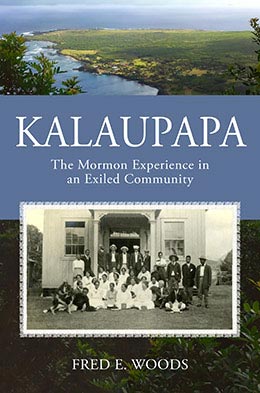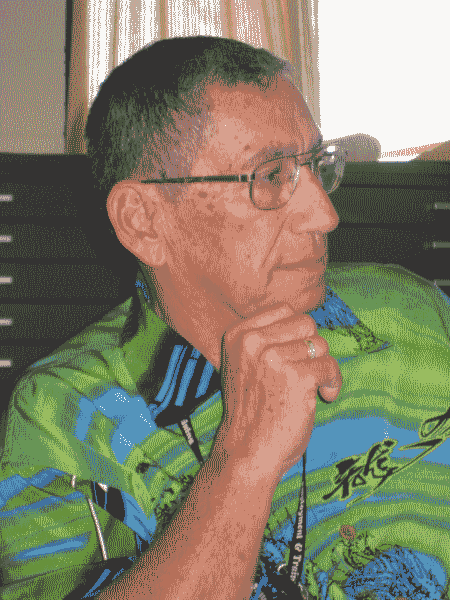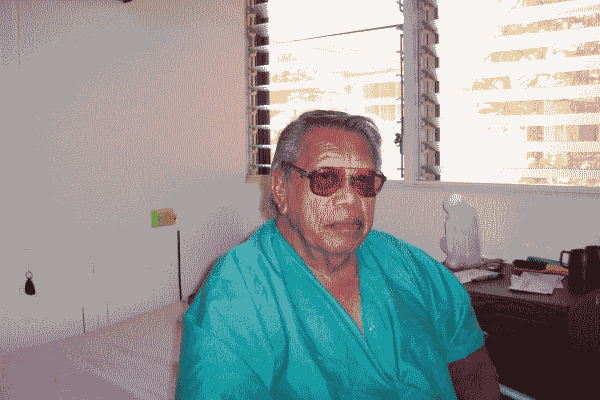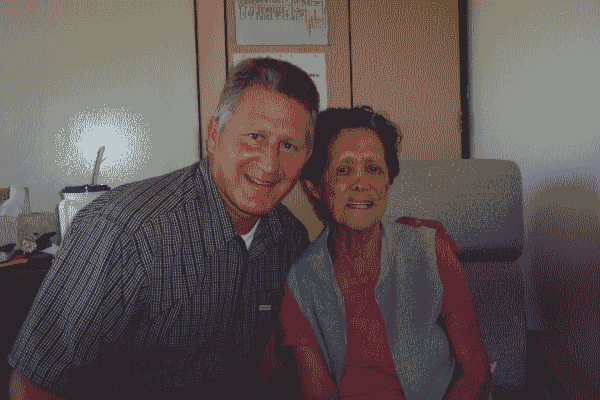Mormons at Kalaupapa in the Early Twentieth Century (1900-1945)
Fred E. Woods, "Mormons at Kalaupapa in the Early Twentieth Century (1900-1945)," in Kalaupapa: The Mormon Experience in an Exiled Community, Fred E. Woods (Religious Studies Center, Brigham Young University; Salt Lake City: Deseret Book, 2017), 57-114.
As the twentieth century dawned, the Honolulu-based Independent announced, “The Mormons are building a large church at Kalaupapa.”[1] By 1904, two new chapels were dedicated: one in Kalawao, the other in Kalaupapa.[2] Construction on the latter had commenced several years earlier while John Haulani was serving as a branch president. During this period, the Saints were required not only to construct the edifice but also to provide funding for it. The meager allowance of fifty cents a week to residents made this an arduous challenge. Yet they saved their money and slowly accumulated needed materials, such as one-by-twelve-foot boards at twenty-five cents apiece, shingles, nails, and a costly bell. Love and devotion for their new chapel were the reward for their great patience and sacrifices. Church members fondly referred to their beloved new LDS chapel in Kalaupapa as “New Jerusalem.”[3]
An Active LDS Congregation
By this time, the Mormon population at the settlement had increased to two hundred, including the baptisms of ten new converts. The following article, written by William M.
Waddoups, appeared in the Deseret Evening News and is titled “Mormon Elders’ Work in a Leper Settlement.” Because of its rich detail, it is included nearly in its entirety.
The Hawaiian leper settlement is one of the many points of interest in the Hawaiian territory. It is situated on a small strip of land of only two or three miles extent, on the island of Molokai, about 52 miles direct from Honolulu. It is a natural prison, surrounded by the ocean and high precipitous mountains. There are in the neighborhood of nine hundred souls now suffering from this dreaded disease and retained at this station.
The treatment of these unfortunates by the officials is the very best. They are furnished good food and clothing. They have clean, sanitary homes, and good medical treatment. They also have amusements of various kinds such as baseball, football, athletic clubs, dances, and various social functions. Educational advantages are good, as they have several excellent schools. Nor is their spiritual training neglected, for they have roomy, pleasant houses of worship and all is done for them that can be done.
Elder David Johnson and I had the privilege of visiting the settlement recently, for the purpose of dedicating the two meetinghouses for the Church of Jesus Christ of Latter-day Saints, one at Kalaupapa and one at Kalawao. These are some of the best houses in the Hawaiian mission.
The building at Kalaupapa has been in course of erection for about five years. It was built entirely from contributions, and finished only after patient, untiring effort by the Saints and friends of the settlement.
We have now good houses where these unfortunates of God’s children can meet to worship Him acceptably.
Our Saints in this settlement are among the most faithful. Their faith seems unshaken in the truth. They are united in doing good, and their greatest joy seems to be in honestly serving the Lord.
They seem happy and contented with their lot, and many, if given the privilege of leaving the settlement, would choose rather to remain. I never felt a sweeter, calmer spirit among our Saints anywhere, than I felt in laboring with these people. Even in their trials, God has given them joy and contentment and a firm testimony of the divinity of the Gospel. Much praise is due to those who have the affairs of the settlement in hand. They are kind and considerate of the people, and every possible comfort is given to them. While there we had the privilege of baptizing ten new members, which swells our ranks to more than two hundred in this home of the unfortunates.
The Gospel there is doing much for the people, and we have every reason to be proud of the work our people are doing.[4]
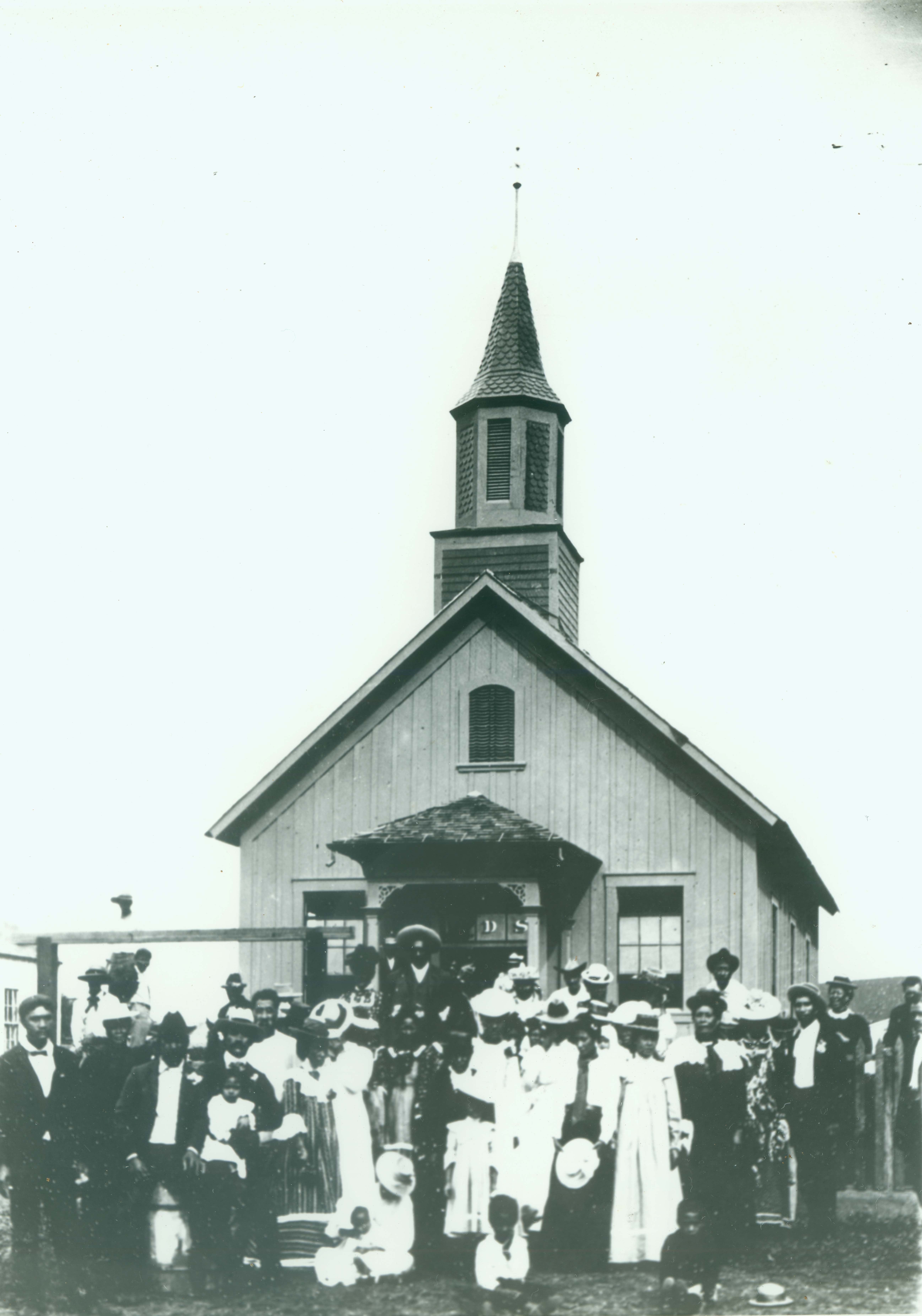 Saints in front of Kalaupapa LDS Chapel, ca. 1907. (NPS/
Saints in front of Kalaupapa LDS Chapel, ca. 1907. (NPS/
The Kalaupapa community as a whole was also happy about a sports event that occurred this same year. The Pacific Commercial Advertiser reported on the recreation of June 11, 1904:
Jollification began on the eve of Kamehameha Day, with a concert by the “H. H. K.’s,” or the Kalaupapa Athletic Club, in beretania hall. The program consisted of athletic exercises, singing, etc. . . . The first event was a shooting match for a dinner, between teams captained by Dr. Goodhue and Superintendent McVeigh. It began at 8 o’clock. The Kalawao band played at short intervals during the match. McVeigh’s team won. . . .
The horse races began at 12 o’clock on the quarter mile track. There was a great turnout of the people and enthusiasm ran high. Drays had been sent around the Settlement to fetch all who were unable to walk.
Other competitive events included a bicycle race, wheelbarrow race, barrel race, and foot races at 1/
It was an interesting race, and partisanship ran high. Three horses were entered—one ridden by a Chinese, one by a Hawaiian, and one by a Portuguese boy. All three riders were lepers; so were the judges and the crowd. . . . The crowd went wild. . . . I went wild, too. . . . They were on the home stretch. The Portuguese boy passed the Hawaiian. There was a thunder of hoofs, a rush of the three horses bunched together, the jockeys plying their whips, and every last onlooker bursting his throat, or hers, with shouts and yells. Nearer, nearer, inch by inch, the Portuguese boy crept up, and passed, yes, passed, winning by a head from the Chinese. I came to myself in a group of lepers. They were yelling, tossing their hats, and dancing around like fiends. So was I. When I came to I was waving my hat and murmuring ecstatically, “By golly, the boy wins! The boy wins!”[6]
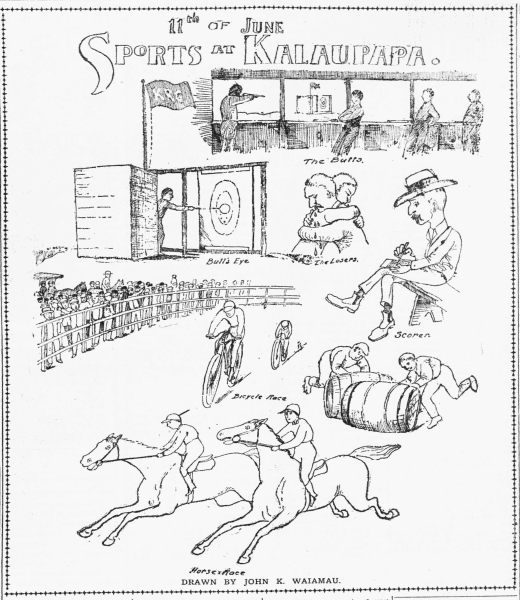 John K. Waiamau, Horse Races at Kalaupapa. ("11th of June Sports at Kalaupapa," Pacific Commercial Advertiser, June 17, 1904, 5.)
John K. Waiamau, Horse Races at Kalaupapa. ("11th of June Sports at Kalaupapa," Pacific Commercial Advertiser, June 17, 1904, 5.)
London also depicted a donkey race that brought a great deal of laughter to the crowd: “Halfway around the track one donkey got into an argument with its rider. When all the rest of the donkeys crossed the wire, that particular donkey was still arguing. He won the race, though his rider lost it and came in on foot. And all the while nearly a thousand lepers were laughing uproariously at the fun. Anybody in my place would have joined them in having a good time.” London added, “In the afternoon Mrs. London and I stood in the judges’ stand and awarded the prizes for horsemanship and costume to the pa-u riders. All about were the hundreds of lepers, with wreaths of flowers on heads and necks and shoulders, looking on and making merry. And always . . . were the groups of men and women, gaily dressed on galloping horses.”[7]
Summarizing the experience, London said he would always remember this celebration: “In spite of the fact that they are afflicted by the disease, [they] form a happy colony. . . . ‘They are so contented down there,’ Mr. Pinkham told me, ‘that you can’t drive them away with a shotgun.’”[8]
Ecclesiastical Visit during World War I
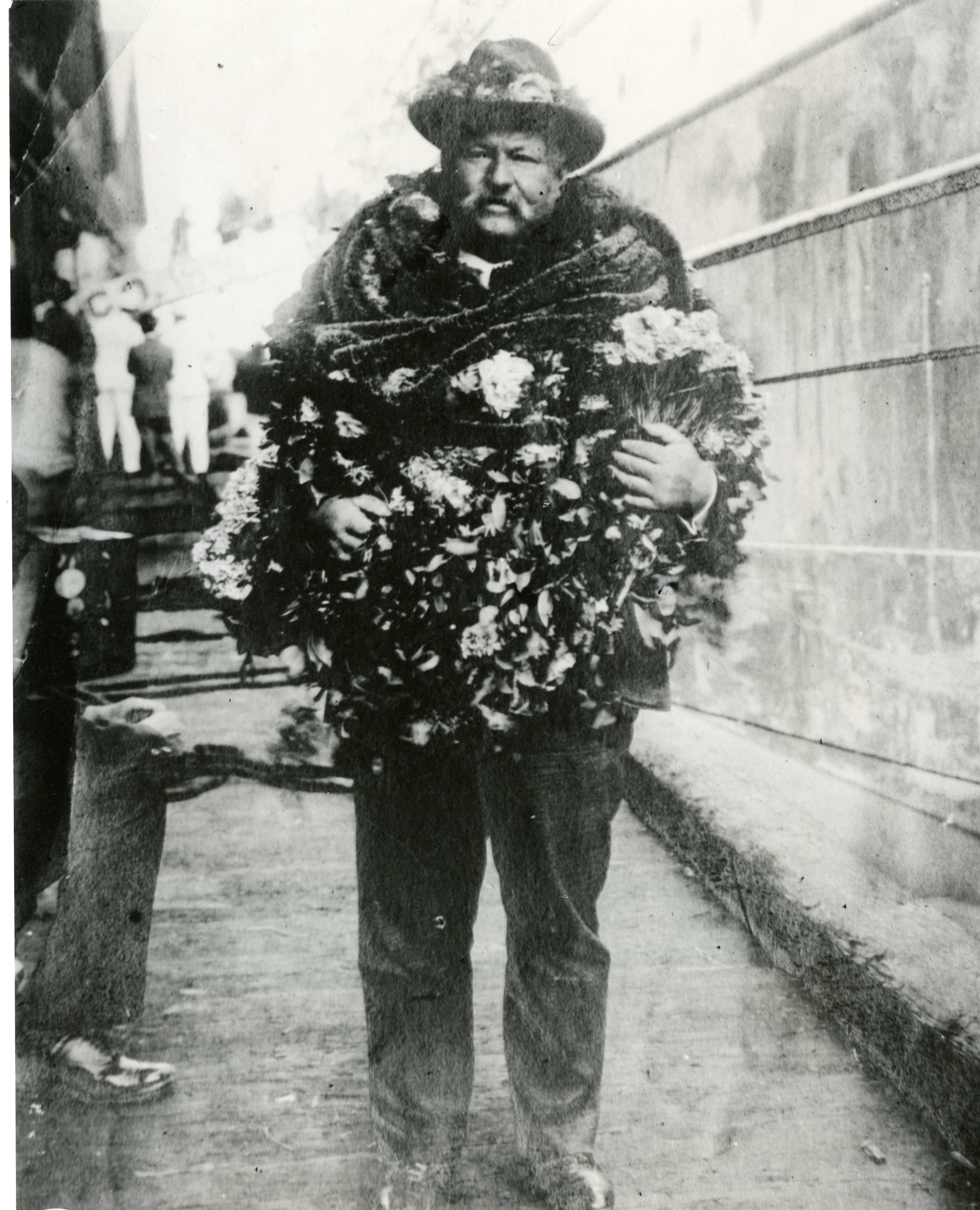 Samuel E. Wooley. (Courtesy of Joseph F. Smith Library Archives and Special Collections, BYU–Hawaii.)
Samuel E. Wooley. (Courtesy of Joseph F. Smith Library Archives and Special Collections, BYU–Hawaii.)
A decade later and shortly after World War I broke out, Samuel E. Woolley, LDS mission president and plantation manager at Lā‘ie, paid a visit to the Kalaupapa settlement. In his journal he recorded his meeting with the LDS women’s organization known as the Relief Society, and also noted the reorganization of the Kalaupapa Branch presidency:
We met with the R.S. [Relief Society] there was a good spirit among us. we listened to them give their lesson then we both spoke to them. we met again at 2 P.M. and had a very good meeting. it seems easy to speak to them as they seem to be anxious to hear, and to learn. At 7 P.M. we had another good meeting, at which Kauhi was chosen Prest. of the Kalaupapa Branch, to take the place of John Haulani who has just died. He chose Eleahala Nahulu and Tommy Kini as his counselors. I set David Kauhi apart, and Bro. Miner set Eleahala apart, and they two were to set the other one apart as he is a Leper, and we are not allowed to set them apart according to the ruling of the Board of Health. Mr. McVeigh the supt. was very kind to us and said he liked to have us come for it always helped him in his discipline, said if there was anything he could do he was willing to do it, to make our stay pleasant. some of the people hated to leave us following us to the house talking to us.[9]
Two years later, President David Kauhi reported detailed statistics of his Kalaupapa congregation. Here is a sampling of some of the categories described during the fall of 1916:
McVeigh and the Food Shortage
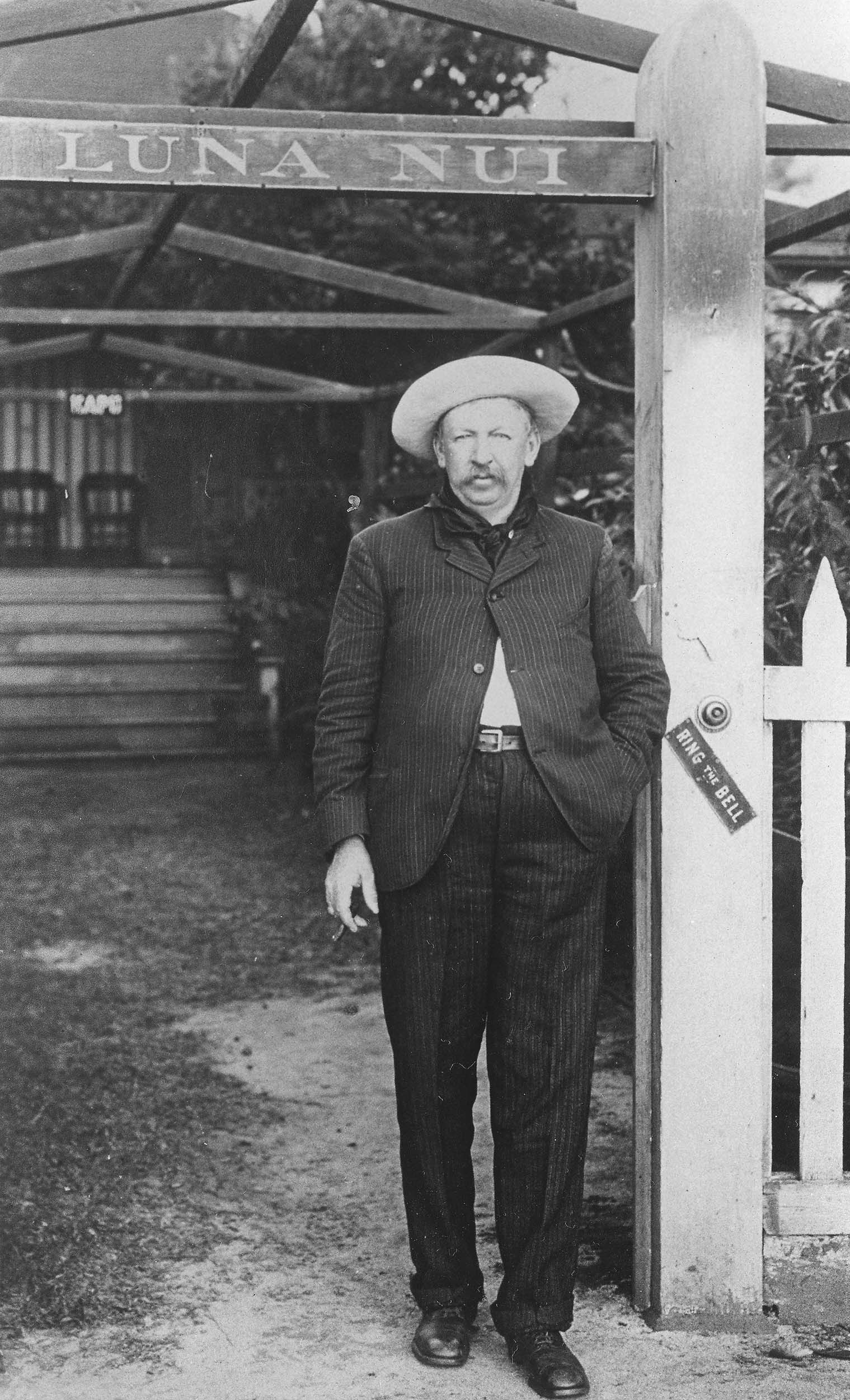 Jack McVeigh, Kalaupapa resident superintendent. (Courtesy of NPS/
Jack McVeigh, Kalaupapa resident superintendent. (Courtesy of NPS/
Several years after his visit, Woolley received a visitor in Lā‘ie: Kalaupapa resident superintendent Jack McVeigh, who had traveled from Moloka‘i to O‘ahu to request much-needed poi, the primary staple food of the Hawaiians. Mary Sing, an LDS patient, arrived at the settlement in 1917 (a year before Mother Marianne’s death).[11] Of this experience, she said:
We were short of poi. . . . We had a lot of taro in the valley but it wasn’t ready to harvest. . . . So our superintendent here, Mr. McVeigh, went out to go to all the different islands to see if they can help to give us so many bags of taro . . . because these people was starving for poi. So every island told him they cannot spare. . . . So he went down to Lā‘ie and Sam Woolley. McVeigh than said to Woolley, “My people are starving for poi; can you spare me some of your taro?” Mr. Woolley responded, “Oh sure, I can spare you some. How many bags do you want?” McVeigh said, “Would you . . . send me forty bags every week; you can send me for one month. Then my taro in the valley will be ready and we can harvest the taro.” Woolley kindly agreed to bring forty bags per week.
Upon McVeigh’s return to the settlement, he called the patients together in the social hall and said, “Everyone of you folks should be grateful to the Mormon Church because if it’s not for them you folks would be crying for poi yet. So now you folks have poi.” And it was lovely taro; we had nice poi from Woolley.[12]
This act of generosity increased the respect and gratitude the Kalaupapa community held for The Church of Jesus Christ of Latter-day Saints.
Second Visit by William Waddoups
No wonder a second visit from William Waddoups to the settlement was so welcomed! He had been appointed in 1919 as the first Laie Hawaii Temple president and was making preparations for the temple dedication that November. He returned to make a change in the Kalaupapa Branch leadership and to involve the members in preparations for the new temple. Entries from Waddoups’s own journal record his activities:
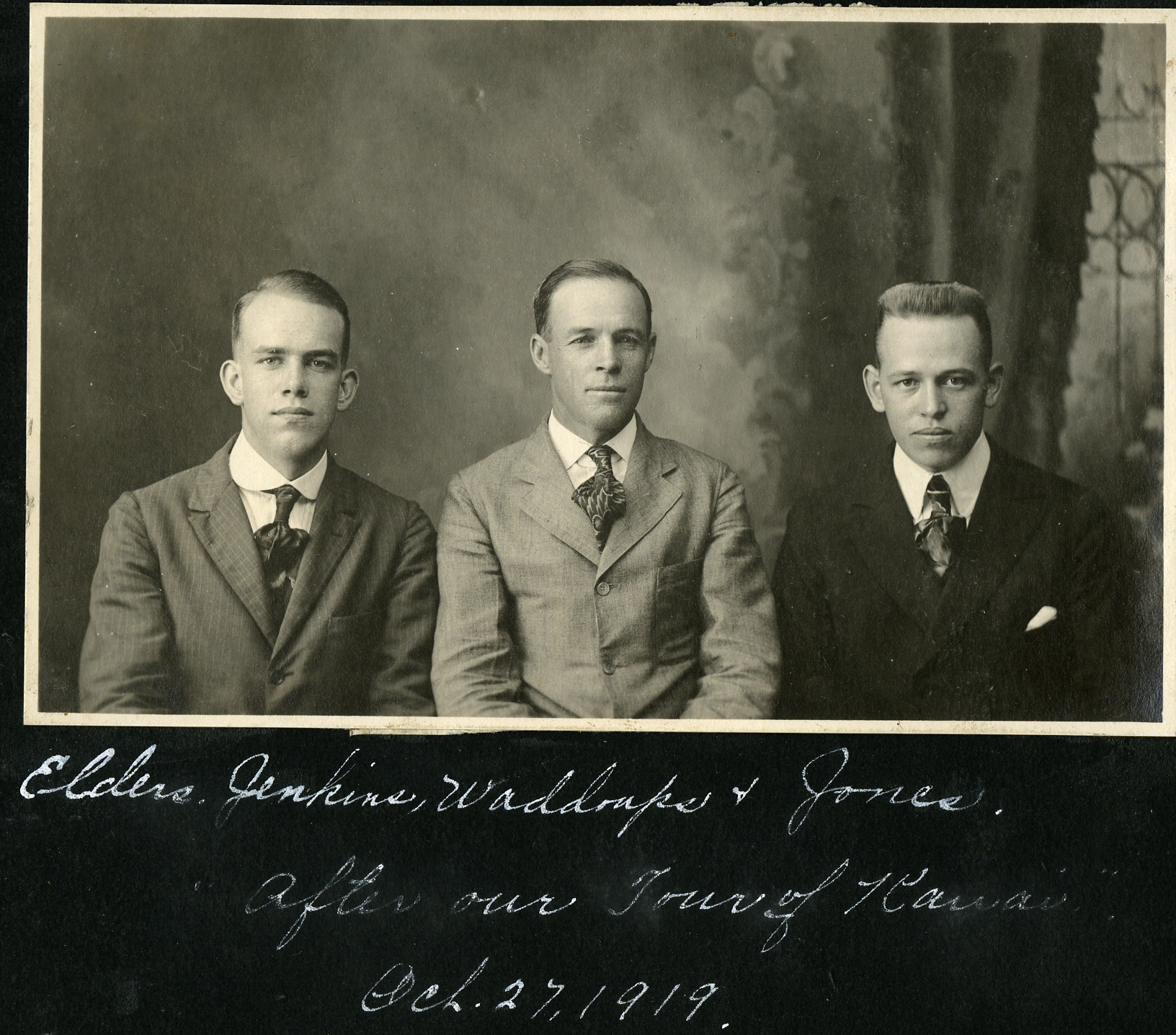 William M. Waddoups. (Joseph F. Smith Library Archives and Special Collections, BYU–Hawaii.)
William M. Waddoups. (Joseph F. Smith Library Archives and Special Collections, BYU–Hawaii.)
Thursday July 31st 1919 Steamed into the little bay at Kalaupapa about 7 a.m. Found Brother John M. Bright, Eleahala Naula and other saints on the wharf to see me they did not know however that I was coming. They took me to visitors quarters and I introduced myself to Dr. Goodhue in charge during the absence of Superintendent McVeigh. He received me kindly, and I was given full possession of Mr. McVeigh’s home. I partook of a good breakfast—prepared by Mr. McVeigh’s cook. John Bright and I did a little visiting at the Hospitals and homes prepared by the Board of Health for Lepers. I find everything clean and sanitary, the board seems to have provided all they can to make things comfortable and pleasant—for the people stationed here. At 4 P.M. we met a good number of saints at the Church and held a good spirited meeting. The good saints here seem overjoyed for have [sic] someone visit them. In the evening at the invitation of Dr. Goodhue I went to the hall and saw a good picture show and heard some good music.
Saturday August 2nd 1919. Brother John M. Bright having prepared two saddle horses for us we went down to Kalawao to visit the few saints who are there and also to look around through the Baldwin Home for boys. We find everything kept-up in a clean sanitary wholesome way. . . .
In the evening 6:30 we held a Priesthood meeting at which Kauhi the president of the branch was released together with his counselors and John M. Bright was selected to fill the vacancy with Eleakala Nahulu and Abraham S. Puaniani as first and second councelors. . . . All in all I have spent a pleasant and profitable day and feel happy and proud that I am here and have the honor to represent so noble a cause. . . .
Sunday Aug 3rd 1919 After a good breakfast I went down to the church for our Sabbath meetings. Sunday School convened at 9 A.M. and there were 60 in attendance. About 10:30 our general meeting convened at which Bro Nahulu presided. Our first business was to ask for the release of retiring President Kauhi which was sustained by a unanimous vote. The Names of the new President and councilors were presented and unanimously sustained as in the priesthood meeting the previous evening. I then set them apart for their respective positions. I then occupied the time in preaching to the people. The spirit of God was present in rich abundance and we had a pleasant and I feel profitable time.[13]
Waddoups’s trip was published in an LDS periodical, which related his efforts to instruct the faithful Kalaupapa Saints on preparing their ancestors’ names for proxy work in the Lā‘ie Temple.[14] The article also noted that most, but not all of the branch members had the disease. For example, the newly sustained branch president, John M. Bright, free of the malady, was living at the settlement to take care of his wife who was a patient.[15]
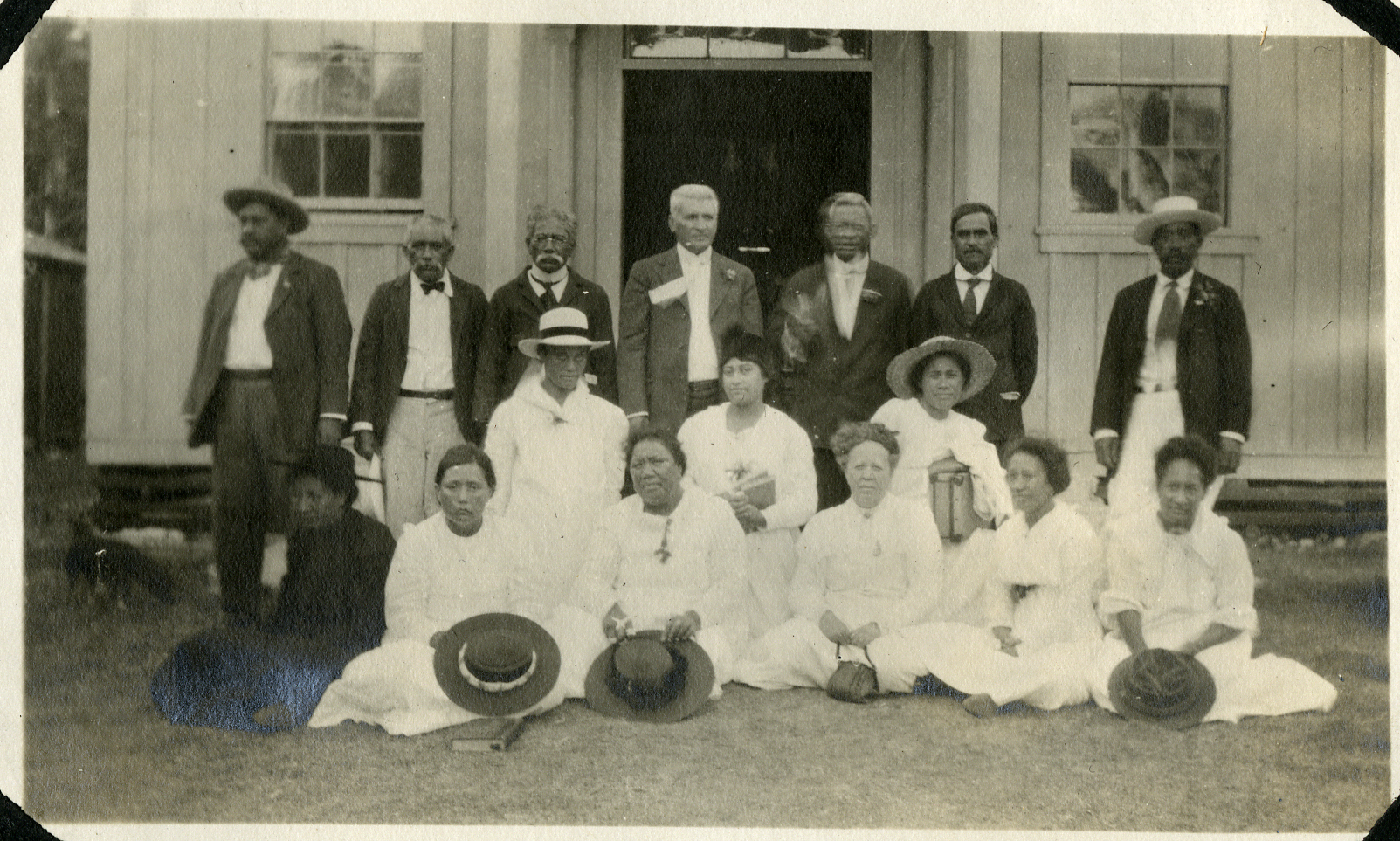 Kalaupapa Saints, 1920. (Courtesy of Byron Jones Collection, Joseph F. Smith Library Archives and Special Collections, BYU–Hawaii.)
Kalaupapa Saints, 1920. (Courtesy of Byron Jones Collection, Joseph F. Smith Library Archives and Special Collections, BYU–Hawaii.)
Waddoups, an avid genealogist throughout his life,[16] eagerly shared his expertise with the Saints at Kalaupapa. His history in Hawai‘i began when he was a young man called to serve a mission there. He later returned to serve as president of the Hawaii Mission (1926–31), and then, as noted above, as the first president of the Laie Hawaii Temple, a calling he held from 1919 to 1930, and 1931 to 1936. As temple president, Waddoups anticipated helping the Kalaupapa Branch members by having the proxy work performed for their kindred dead when the temple opened in late November 1919. From another journal entry, Waddoups recorded his visit with the LDS Women’s organization, the Relief Society, as well as the Kalaupapa Saints in general:
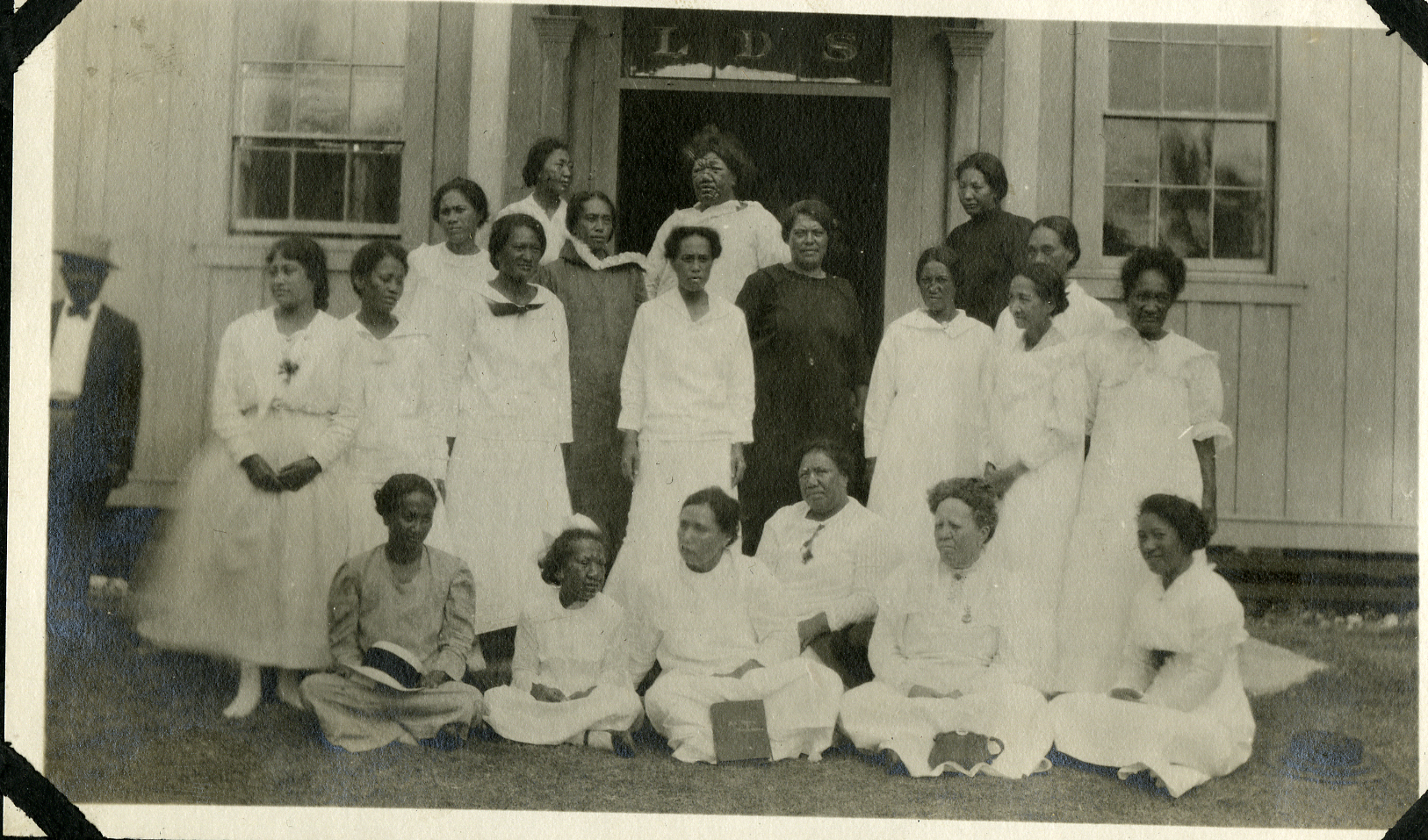 Kalaupapa Relief Society, 1920. (Courtesy of Byron Jones Collection, Joseph F. Smith Library Archives and Special Collections, BYU–Hawaii.)
Kalaupapa Relief Society, 1920. (Courtesy of Byron Jones Collection, Joseph F. Smith Library Archives and Special Collections, BYU–Hawaii.)
Friday August 1, 1919. At 9 A.M. attended Relief Society and enjoyed an excellent spirit. The Relief Society gave me $30.00 for traveling expenses and $10.00 for Temple fund. In the evening we held a meeting in the meeting house in which I instructed the saints upon temple work and the proper way to prepare their genealogies for temple work. The interest of the saints in this matter is very encouraging and we have great hopes for the work. All are very anxiously waiting for the dedication and the commencement of the work.[17]
The financial contributions and efforts of members to prepare names for proxy work in the temple are even more admirable when one considers that because of the restrictions placed upon them by the board of health, they would not be able to attend the temple dedication nor perform the proxy work for their relatives.
The temple dedication occurred on Thanksgiving, November 27, 1919. Hundreds of Latter-day Saints gathered for this sacred occasion. In the dedicatory prayer offered by the President of The Church of Jesus Christ of Latter-day Saints, Heber J. Grant, he mentioned Jonathan Napela, who had passed on forty years earlier: “We thank Thee for raising up Thy servant Elder J. H. Napela, that devoted Hawaiian.”[18]
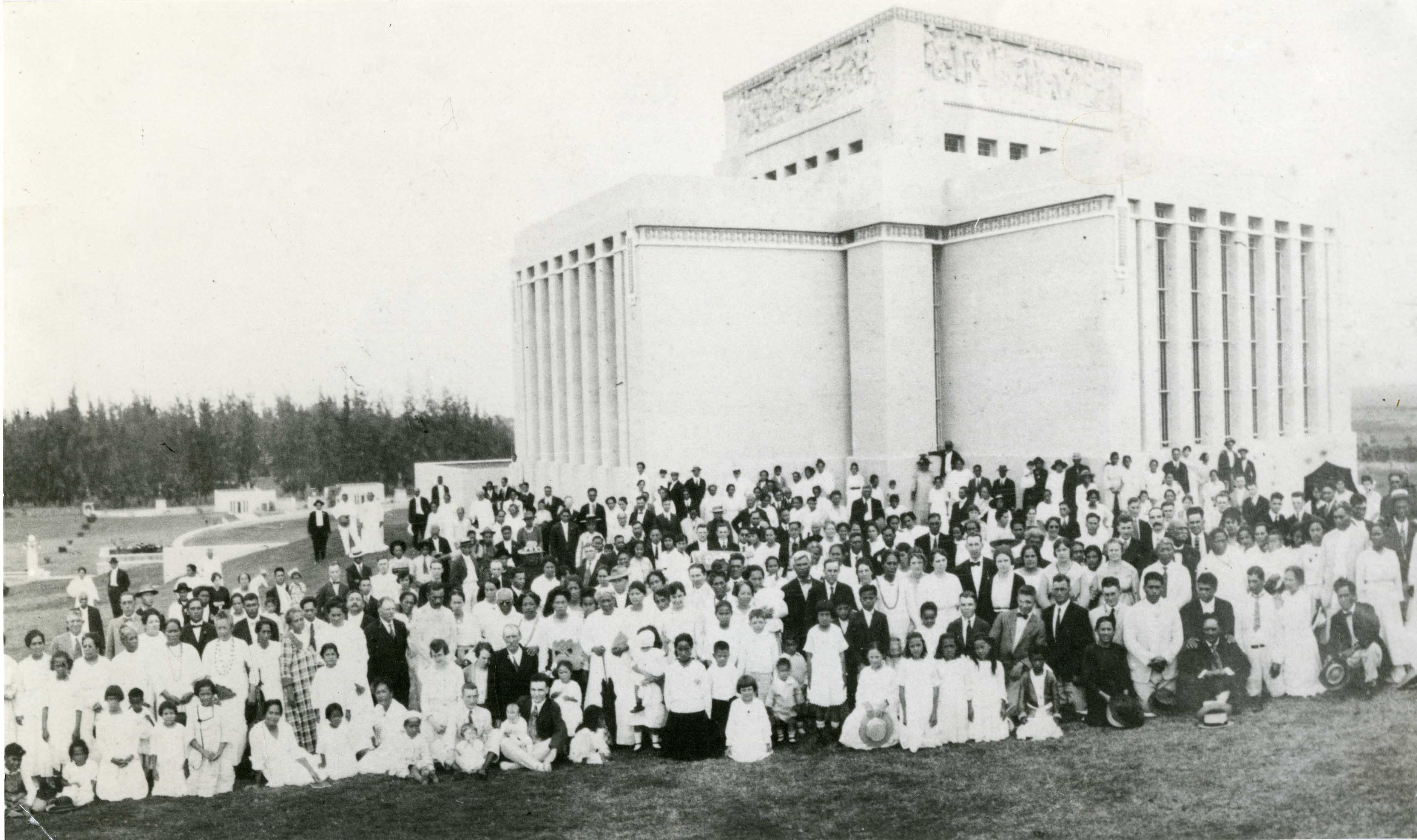 Laie Hawaii Temple dedication, November 27, 1919. (Courtesy of Joseph F. Smith Library Archives and Special Collections, BYU–Hawaii.)
Laie Hawaii Temple dedication, November 27, 1919. (Courtesy of Joseph F. Smith Library Archives and Special Collections, BYU–Hawaii.)
For Napela and other Mormons at Kalaupapa and elsewhere, death was not a finality. The temple was the intersection of heaven and earth, the place where necessary baptisms for the dead could be performed, and the location where eternal marriages for both the living and the dead were solemnized by proxy work.[19] Although the Kalaupapa Saints couldn’t participate in these ordinances at that time, they faithfully prepared names for those who could attend the temple and complete the vicarious work, which is why Waddoups went to Kalaupapa for this important genealogical training. Their diligence in preparing names for temple work is evidence of their sincere belief in the LDS doctrine of vicarious work for the dead. A report from an LDS mission conference, under the caption “Hawaiian Mission,” mentions the Saints’ enthusiasm for the temple work:
“KALAUPAPA BRANCH:— . . . John M. Bright, Pres., Kalaupapa, Molokai. The people here, although not allowed to mingle with the outside world, are taking hold of the work of the Lord and are doing all in their power to push it on. . . . The Elders once or twice a year take a trip to the settlement.”[20] Another article in the spring noted some challenges the Kalaupapa LDS Church members were encountering as they continued preparing names for submission to the Laie Hawaii Temple:
The work of the Lord is making good progress among this unfortunate people, although not without opposition, as Satan is working hard among the people of this . . . settlement and is causing some to leave the Church, while at the same time converts are being made. President Bright writes that they are not discouraged, but that their faith in the work of the Lord is growing stronger.[21]
LDS Conference at Kalaupapa
The following month, the Mormons at Kalaupapa held a Church conference, a report of which was later published in the LDS periodical Deseret News in Salt Lake City. Church auxiliaries were thriving among general optimism despite challenging circumstances in the surrounding islands due to an influenza epidemic. Although not one single case had been reported at Kalaupapa, no visitors were allowed to visit the settlement, which included the LDS missionaries:
The Saints felt bad on receiving this news, as it is a big day for them when the servants of the Lord come to visit them, which in the past has only been once or twice a year. Notwithstanding this great disappointment they enjoyed their conference and all testified that it was the best they had ever attended.
This statement confirming that the local Saints, though physically afflicted, were strong in spirit.[22]
Optimistic Leadership of The Brights
In a letter sent the following month, May 1920, to Hawaii Mission president E. Wesley Smith, John M. Bright expressed his gratitude for the opportunity to serve among the LDS members of the settlement, where his wife, Eliza, was a patient; he did not have the disease. This was a circumstance reminiscent of Jonathan Napela and his beloved Kiti. Bright wrote, “We thank the Lord for selecting us to work in this portion of the field, and the privilege of being numbered among His servants. He has blessed me abundantly and has placed me in a position of trust and influence, the duties of which I will perform to the glory of His name.”[23]
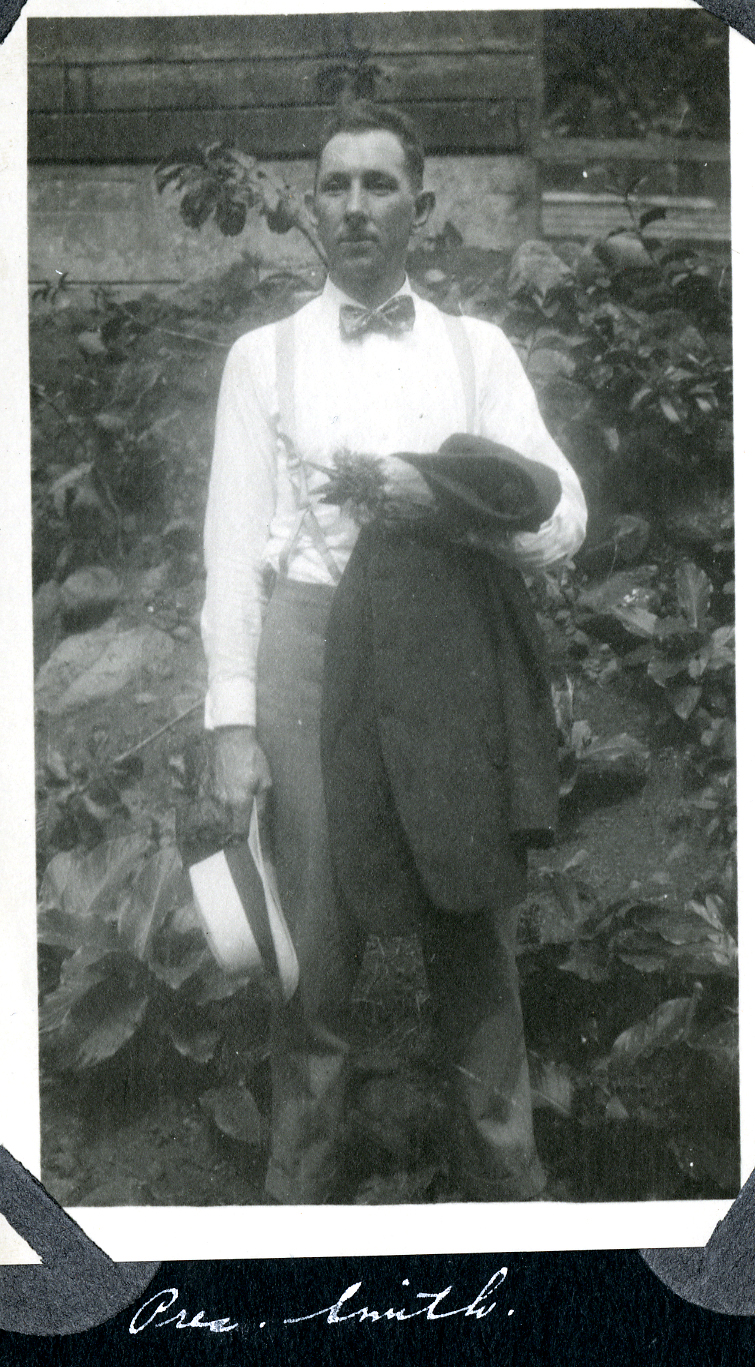 President Elias Wesley Smith, ca. 1921. (Courtesy of Joseph F. Smith Library Archives and Special Collections, BYU–Hawaii.)
President Elias Wesley Smith, ca. 1921. (Courtesy of Joseph F. Smith Library Archives and Special Collections, BYU–Hawaii.)
Several months later, Bright joyfully reported interest in the expansion of the LDS Church at Kalaupapa, saying, “The work in the . . . settlement is progressing among all nationalities. A Japanese who has been investigating was baptized the other day. His wife was already a member and they are indeed happy in the Gospel. There are many investigators at present, among them being Koreans, Japanese, Hawaiians and English-speaking people.” Also noted was the wonderful work Eliza Bright was doing among the Relief Society sisters.[24]
Christmas at Kalaupapa
Christmas that year was no doubt a delight for the Brights and other patients, who received a weeklong visit from President E. Wesley Smith, accompanied by an Elder George Bowles. The title of Bowles’s experience was “A Very Happy Christmas.” It is a detailed description of the routine for settlement visitors and also captures the joyous spirit of the settlement during this special holiday season:
On [Wednesday] December 21 Pres. E. Wesley Smith called me to accompany him to visit Kalaupapa. . . . we reached our desired destination at daybreak, Thursday, December 23. At the landing we were greeted by Pres. John M. Bright of Kalaupapa, also by a number of Saints, with that beautiful Aloha known only in Hawaii.
Preparation had preceded our coming for the celebration of Christmas and it was to be on an elaborate scale, because Pres. Smith would be present. We saw the final work being done, which was the filling of some three hundred bags with oranges, apples, nuts, raisins and candy. Those engaged in this were so happy that they could not refrain from laughing and singing the native songs which are especially for the purpose of expressing the love for our Father’s children. . . . At six p.m. Pres. Smith and I went to the Hale Christmas and to our surprise the house was filled to overflowing, a number having to be content on the outside. When we faced this large congregation of grown people (for there was only a child of about ten years of age present) we beheld one of the most beautiful pictures. A sea of happy faces so full of joy in anticipation of what was to come that evening. The thought came into our hearts that if this afflicted people could praise the Lord and thank Him, how much more should we, the favored ones, extol the mercies of the Lord and serve Him all our days.
During the program a real Santa Claus came in accompanied by a merry group of people, ringing bells, laughing and singing. Confetti was used for snow which helped to make it more realistic. Songs and speeches were rendered then the presents and bags were distributed to all those present with the exception of four, they being two Calvin Ministers, Pres. Smith and myself. We looked on the scene and could experience in our hearts something of the joy that was theirs. With the conclusion of the party came the announcement that it was the best ever had.[25]
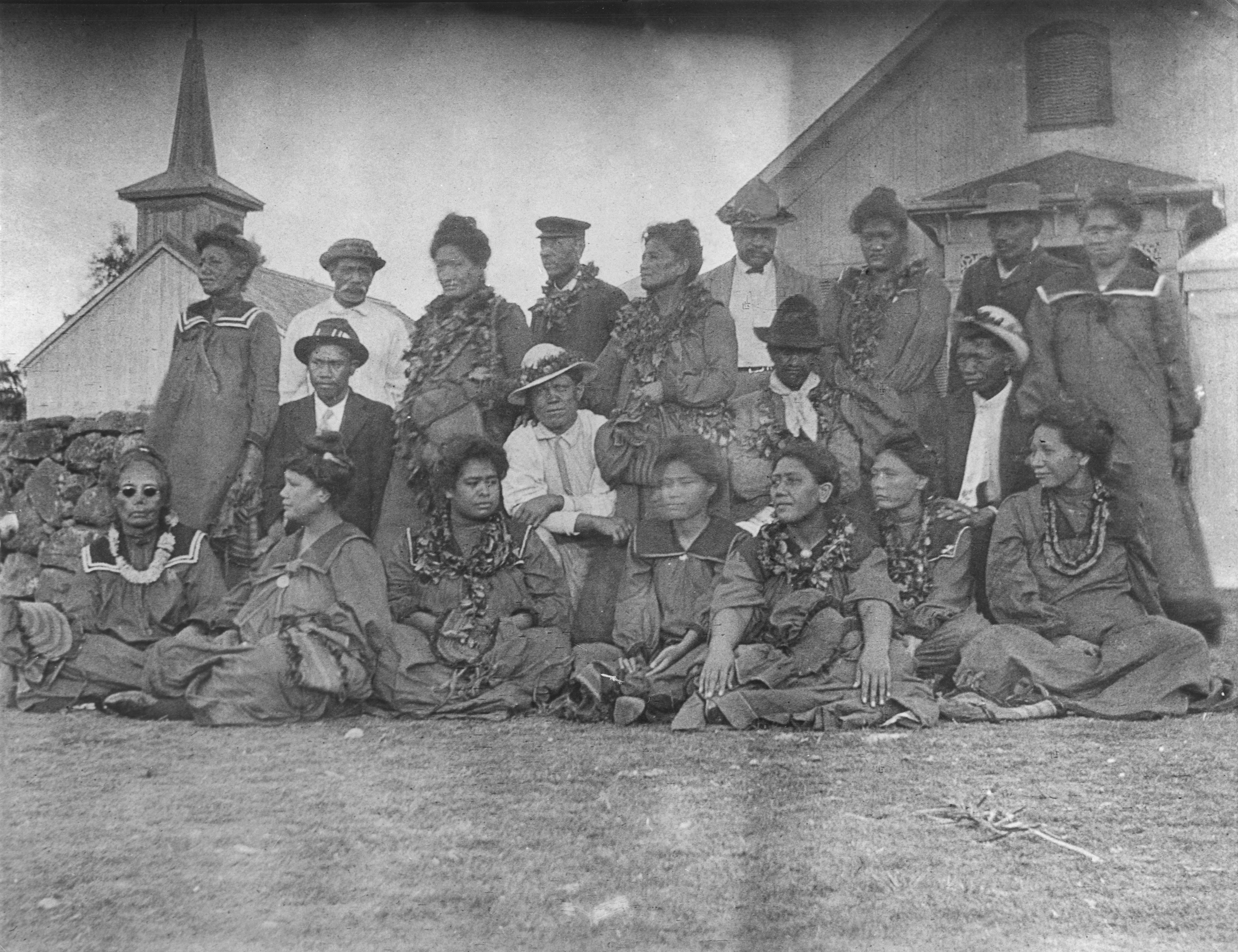 Saints in front of LDS Church and Social Hall, early twentieth century. (Courtesy of NPS/
Saints in front of LDS Church and Social Hall, early twentieth century. (Courtesy of NPS/
The following year, Kalaupapa Branch president John M. Bright sent a heartfelt letter to President E. Wesley Smith, thanking him for the visit he and Elder Bowles had made to the settlement. The note expressed the local Saints’ commitment to their faith, affirmed their support of Church leadership, and wished President Smith and the missionaries he presided over—as well as the Laie Hawaii Temple workers—a merry Christmas from the Kalaupapa Saints:
Dear President Smith: We, the members of the above named Church residing in Kalaupapa, . . . do hereby write you these few lines, as a Christmas Greeting to the Mission of which you are the Presiding Elder.
We declare herewith our appreciation for the abundant blessings which the Lord has bestowed upon us, an afflicted people. Although we are not numerically strong, number in all nearly one hundred saints, we beg you to believe us that our faith and trust in the Lord are as firm as ever and we will, jointly and severally, use our utmost endeavors to uphold His laws and commandments, seeking always for high efficiency of knowledge and intelligence in His work.
We desire to thank you and the Elders who have visited us since last Christmas, for the inspiration which your precences [sic] gave us, and trust that these visits will be continued as often as convenience would permit.
We raise our hands to support and sustain the general officers of the Church, from the Prophet and the Presidency down, including yourself and those with you as officers in charge of this Mission, and extend this support to the different missions in all the world.
We desire further to register our highest reverence and esteem for our Prophets and Seers, from Joseph Smith down to our late beloved President Joseph Fielding Smith, including all those great, stanch honest and venerable men whom the Church has produced, before and since the days of Nauvoo to the present day.
Wishing you, dear President Smith, and the elders and officers of the different Conferences, and Branches in the Hawaiian Mission, and also the officers in the Temple of the Lord in Hawaii, a Merry Christmas and a Happy New Year, we are Your afflicted brothers and sisters of Kalaupapa Branch by John M. Bright Branch President.[26]
Kalaupapa Relief Fund
The very people seemingly the most in need continually gave all they had to bring relief and happiness to others. The following year, they, along with other LDS Church members on the island of Moloka‘i, contributed seventy dollars to the Near East Relief Fund to relieve suffering Armenians caught between the Red and White Russian armies following the Bolshevik Revolution.[27] During this same year, 1921, more than a hundred Latter-day Saints from the Honolulu conference visited Kalaupapa to provide entertainment for the settlement.[28] In September, President Smith reported on the size of the LDS Kalaupapa congregation as well as on the leadership and spirit among the Saints in the settlement: “The leper settlement is located on the east of this island and we have a very live conference there, called the Kalaupapa Branch (or conference). Elder John M. Bright, a local Hawaiian is president of the same, and he is a very able man; we have one very nice chapel there and a band of faithful workers numbering about 130.”[29] The following month, Mormon Apostle Joseph Fielding Smith and his wife visited Kalaupapa. This was the first known visit of an LDS Apostle to the settlement, and the local Saints were overjoyed by the visit.[30]
Congregation in Good Condition
Over the next decade, various reports detailing the activities and condition of the Kalaupapa Saints would be recorded. For example, several brethren received the priesthood and were advanced in it.[31] In the spring of 1927, President Waddoups, then serving simultaneously as the Laie Hawaii Temple president and as the LDS Hawaiian Mission president, made another trip to Kalaupapa with his wife and a fellow Church member named Freda Linnebach: “While there Pres. William M. Waddoups dedicated the chapel, which had been remodeled and repainted. He reported that the branch was in very good condition, and large crowds attended all of the meetings.” Such visits were not forgotten by the Kalaupapa Saints.[32]
The following year, assistant Church historian Andrew Jenson wrote a detailed description of the LDS Hawaiian Mission, which included the following depiction of Kalaupapa:
The Kalaupapa District consists of the leper settlement on the island of Molokai. The . . . Kalaupapa District consists of about 95 members of the Church residing in Kalaupapa (leper settlement), situated on the north coast of the island of Molokai and separated from the rest of the island by a precipitous pali or cliff about 1000 feet high and is almost inaccessible except from the sea. J. E. Nahulu is president of the district which consists of one branch only. There is a well constructed frame chapel in the settlement with a seating capacity of about 200. There is also a Relief Society, a Sunday school and a M.I.A. for both sexes. All the members of the Church, as well as the other inhabitants are more or less smitten with leprosy, except the helpers.
The island of Molokai lies about 25 miles east of the island of Oahu and about 56 miles from Honolulu. Its native name is Ka-ania-pali, the land of precipices. It is 40 miles long and 7 miles broad and has an area of a little more than 200 acres. The leper settlement on the elevated, grassy plain of Kalaupapa has an area of 8000 acres. This plain is bounded on three sides by the ocean and on the landward side by perpendicular cliffs. There is always a delicious blending of warmth and coolness in the air which indisposes one for mental and physical effort and soothingly induces a condition of blissful and tranquil repose.
The whole number of lepers in the Molokai settlement in 1902 was officially reported as 1,191, viz: 741 males and 450 females. There are hospitals, dispensaries, churches and comfortable cottages for the accommodation of families. These cottages are well ventilated, abundantly supplied with fresh water and kept in good condition.[33]
1930s LDS Church Attendance
Two years later, as the new decade of the 1930s dawned, President William M. Waddoups again visited the settlement with his wife, Olivia, and their friend Freda Linnebach. After returning from this experience, he wrote an article to an LDS Church periodical to try to capture the unique spirit of the Kalaupapa settlement. Here he described that one would find a people “cheerfully hopeful, and spiritually exalted above most fellows.” Waddoups also mentioned, “I have never known more optimistic resignation. Where you would naturally expect sadness, you find cheerfulness. Where you would look for tears you find laughter. I think I saw more smiles to the square inch in this unique village than in any other I have ever visited.” He added that the Kalaupapa Saints were among the “best tithe payers” and noted, “One of the best pleasing features of our meetings with them is the singing. In no place in the world have I heard singing of such a sweet harmony, perfect rhythm, and natural soulful rendition as we heard there.”[34]
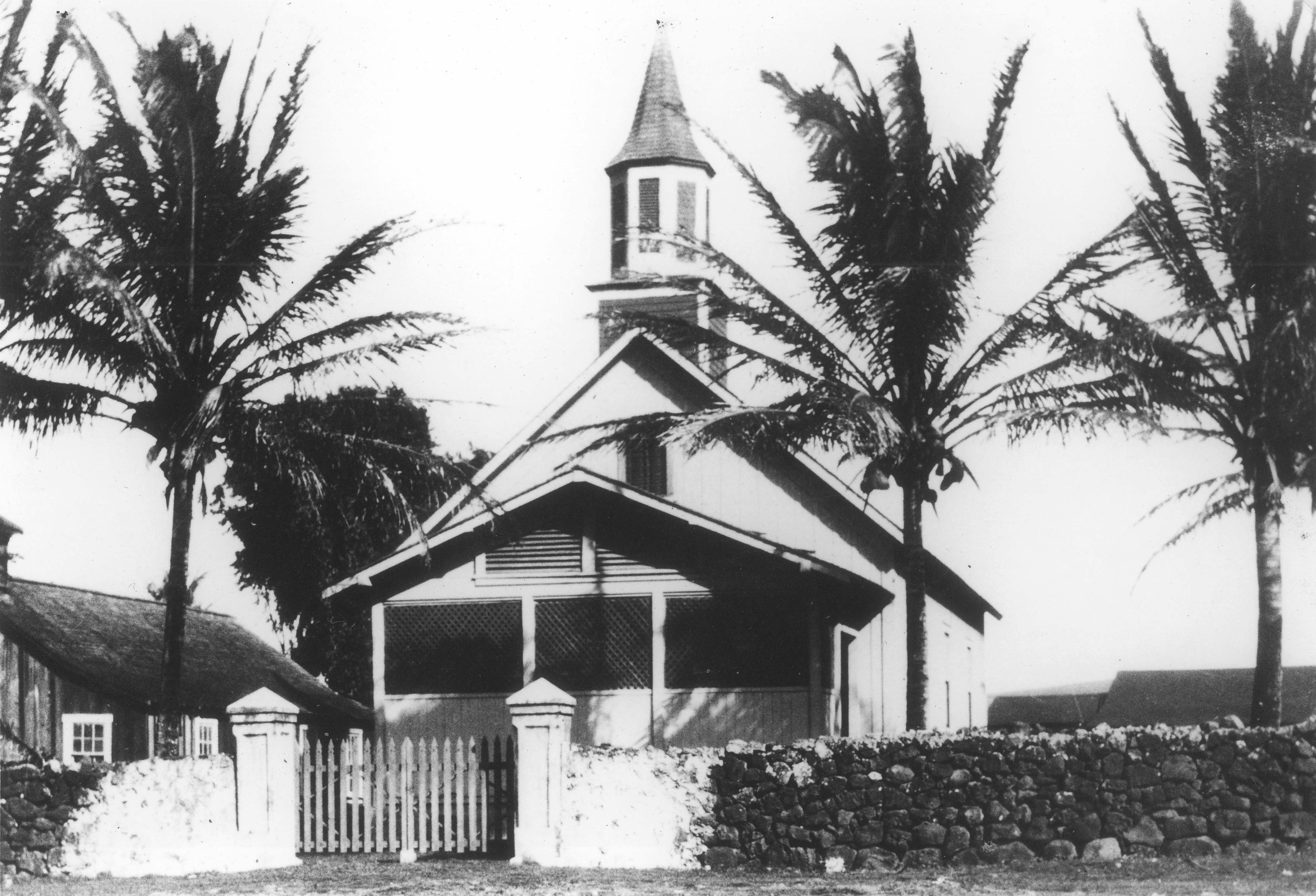 Kalaupapa LDS Chapel, 1932. (Courtesy of NPS/
Kalaupapa LDS Chapel, 1932. (Courtesy of NPS/
During the 1930s, LDS Church records document the number of members regularly attending meetings. For example, during the month of March 1933, a total of sixty-nine members attended Sunday School, with an average attendance of thirty-seven, along with six visitors.[35] In addition, a composition notebook with a list of members attending various meetings during the years 1935 to 1938 provides several names of those in attendance. These records are mostly composed of prayer-meeting roll calls from Sunday School, dates of attendance, and program notes, as well as a record of an LDS youth program held on Christmas Eve. This program record included the name of Pastor Alice, again evidence of the close connection between the Mormons and the rest of the community.[36]
Minutes of the LDS Hui ‘Ōpio (Youth Association) Meetings at Kalaupapa for the years 1928 to 1948 indicate that weekly meetings were occurring to meet the needs of the youth, both young women (YW) and young men (YM). Hui ‘Ōpio minutes for the year 1935 list the names of the following leaders who frequently attended these meetings, as well as separate meetings for officers:
Branch President—David Kauhi
YW President—Lilian Roback (President of the “Ladies Board”)
YW 1st Counselor—Julia Koa
YW 2nd Counselor—Mary Terry
Secretary—Rose Kahikina
YM President—Jonah Mahelona (President of the “Men’s Board”)
YM 1st Counselor—Henry Williams (listed also as 2 Counselor in the YM)
YM 2nd Counselor—William Kailimai listed as 2nd C in YM.
YM Secretary—Jack Sing[37]
A typical weekly agenda consisted of talks, songs, and various activities, which included classes in both English and Hawaiian and debates held by both groups. The topic of debate for the evening of January 27, 1935, with thirty-five in attendance, was, “Why we think [it] is better to live in the country than in the city.” Another was, “What we prefur [sic], to have to ride a horse or an automobile.”[38] Minutes from a week later show the involvement of adults with the youth both within the settlement as well as from topside Moloka‘i. The program for the night included “a song by the Relief Society Ladies . . . Story telling by . . . William Kailimai . . . a song by Helena Phua and Helen Ehu . . . a song by all the elders . . . [and] a short story by brother Jack Sing.” In addition, there was an address by Betsy Makebay, president of the Relief Society of the Hoolehua Branch, as well as a “Song by Robert Makainui of the Ho‘olehua Branch . . . [and] a talk by Branch President David Kauhi,” with a total of fifty people in attendance.[39] In addition, that spring, Reverend Conney gave a talk at the Hui ‘Ōpio meeting, and he and his wife also sang a song during the course of the evening, again demonstrating the outreach of the Kalaupapa Saints.[40]
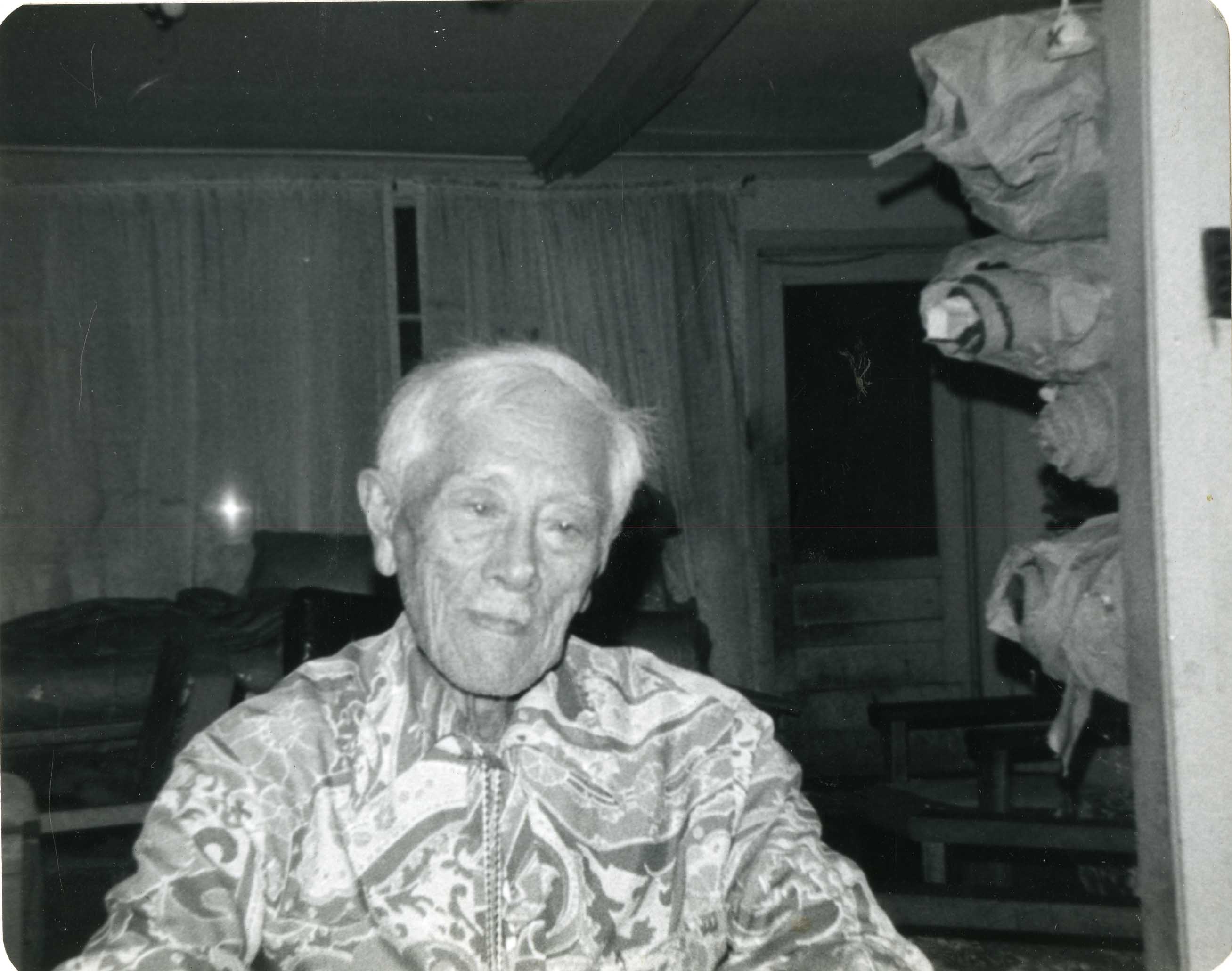 Ernest P. Elia. (Courtesy of Joseph F. Smith Library Archives and Special Collections, BYU–Hawaii.)
Ernest P. Elia. (Courtesy of Joseph F. Smith Library Archives and Special Collections, BYU–Hawaii.)
A letter from Roscoe C. Cox, LDS mission president in Hawai‘i during this era, also reveals that the Kalaupapa Saints were using both Hawaiian and English hymnals; a dozen of each had been ordered by one of the local members. Cox and his wife had kindly sent the hymn books as a gift. Singing the hymns in both languages implies a cross-cultural unity among the congregation, most of whom were Hawaiian.[41] Ernest P. Elia, a Church member who visited the Mormons in the settlement from topside Moloka‘i about this same time, remembered, “The membership down [at] Kalaupapa was so many; old timers, . . . and we stand up and sing old songs, Deseret, but in Hawaiian, . . . and other famous songs too.”[42]
Father Damien Remembered
About this same time, and nearly a half-century since Damien’s death, records show that patients continued to remember the selfless service given by this extraordinary priest. In 1938, the Roman Catholic Church sent representatives out to interview Kalaupapa patients of various denominations. Much effort was expended to determine if Damien was truly the saintly man that had been reported, in order that he might be officially beatified, a step in the process of being canonized a Saint by the Catholic Church. Lengthy excerpts of testimonies by Latter-day Saints confirmed that Damien’s charity extended beyond religious boundaries.
David Kamahana, who had been at Kalaupapa for almost fifty years, was the first to be interviewed by agents appointed by the Archdiocese of Honolulu, Territory of Hawai‘i, after which the written statements were sent to the Archbishop Archive in Mechelen-Brussels, Belgium. All witnesses were asked to sign their names to a solemn document titled “Oath of the Witness,” with the following stipulations of this agreement: “I, _____________, touching the Holy Gospels of God placed before me, swear and promise to tell the truth about the Interrogatories and the Articles concerning which I shall be examined in the Cause of the Beatification and Canonization of the Servant of God, Joseph Damien de Veuster.”
David Kamahana signed this document on August 23, 1938. He also answered a series of standardized questions that provided the following information:
My family name is Kamahana. I was born in Waipi‘o, Kawaii. My father’s name was Makaoi. My mother’s name was Kapahu. My age is 63. I am married. I am a storekeeper in the settlement. I am a Mormon by religion. I belong to the middle class in wealth. . . . No one told me to give special answers. I come for no other motive than because I was called to testify. I come for the glory of God. I was a friend of Father Damien. I am no relative of his. . . . I knew Father Damien. I heard of him from the other people also. They spoke very well of him because of the work he did here. The people spoke very well of his charitable work of distributing clothes and food from outside for us in those days the place was very poor. . . .
I know all this from personal knowledge for I remained three months with Father Damien at Kalawao before his death. . . . He was a virtuous man and I have never seen him do anything unbecoming a friend.
He was a very saintly priest. . . . His faith in God must have been great because I saw the great work he did for God. Father Damien always showed that he was a good Catholic priest. He treated all alike, Catholics, Protestants and Mormons. He was kind and appreciative. . . . Father Damien used to go and exhort the people to go to church. He called them to attend church.
I use to go to church with the Catholics. Through his works and kindnesses he converted many to the Catholic religion. Father Damien exhorted . . . did not force the non-Catholic people to go to the Catholic church. . . . I do not think he was discouraged for he continued to do his work even though he was sick.
Father Damien trusted God and did expect help or reward from the people. I observed all these things myself. He was always cheerful and endeavored to cheer up the sick and encouraged them to have confidence in God. . . . I cannot say whether he really loved God but I know that he loved his neighbor from his works. He must have loved God also since he loved his neighbor so much.
The second Mormon interviewed, David Ilihia, swore the same oath, as typed on a standard form dated August 25, 1938:
I, _____________, touching the Holy Gospels of God placed before me, swear and promise to tell the truth about the Interrogatories and the Articles concerning which I shall be examined in the Cause of the Beatification and Canonization of the Servant of God, Joseph Damien de Veuster. . . .
My first name is David. My family is Ilihia. I was born Hilo, Hawaii. My father’s name was Kaihumua. My mother’s name was Naooloaa. I am 69 years old. I was married. I am now a leper in the settlement. My religion is Mormon. I am poor. I have been in the settlement for 50 years. . . . Nobody told me what to answer to the questions. I have no human motive I come for the greater glory of God. I am not related to Father Damien but was a friend of his. . . . I knew the servant of God personally. I heard Father Damien often mentioned by the other lepers. Nearly all spoke well of him. I heard him spoken of before and after his death. I have read nothing about Father Damien. . . . I have a great affection for Father Damien because he was so good. I would like to see him declared a saint. . . .
I believe his faith in God was firm. His great faith in God was manifested by his many works. Father exhorted all the people to believe in God. He tried to bring all into the Catholic Church. He even asked me to become a Catholic. . . . I saw him at prayer. I used to see him pray in church and whilst on his rounds in the settlement. He exhorted all to pray to God in their trials and sickness. The thing that impressed me most in Father Damien was that he was a man of prayer. . . . He had great hope in God because he always prayed to God for what he wanted – and in his sufferings. This is why he was always so strong and courageous in his work. He never lost courage. I know this because I saw it. . . . He must have loved God very much because as often as he could he worshiped him in church. He wanted all of us to love God very much. He often exhorted all the people to love God. . . .
He was the same to all and did not love one more than another and treated Protestants and Catholics alike as far as charity was concerned. His first duty was always his duty to God.[43]
Art Slater’s Pre–WWII Kalaupapa Experience
While Damien’s contributions to the settlement were unforgettable, many other Catholic priests and sisters, as well as additional ecclesiastical leaders and volunteers of various denominations, likewise served faithfully at Kalaupapa. After the official Catholic interviews were completed, Mormon leaders continued to make visits. Elder Charles A. Callis, another member of the Quorum of the Twelve Apostles, made a special visit to the Saints at Kalaupapa in the early spring of 1940. Callis wrote, “A delegation of lepers met us as our plane landed and sang a song of welcome. These unfortunate people met in our church and we preached to them. At the close of the meeting, the Presiding Elder, [David K. Kauhi] himself a leper, made an eloquent address of response. We all shed tears. They sang songs dedicated to each of us.”[44]
LDS missionaries also walked down the steep pali to reach out to the Kalaupapa Saints. One of those missionaries was Elder Arthur D. Slater. In late August 1941, Slater’s journal explains that he was one of several LDS missionaries stationed on topside Moloka‘i making demanding trips to Kalaupapa via the pali: “Elder Tew and Graf returned from Kalaupapa this afternoon. They got rained on all the way up the pali and looked like drowned muskrats when they got to the top.”[45] Two weeks later, Slater again wrote, “We were going to Kalaupapa today, (the leper settlement) but when we got to the pali, it was raining too much so we came back home.”[46]
On Saturday, September 13, 1941, Slater described the gate at the top of the Kalaupapa trail, explaining that it was guarded by a Mormon named Mr. Tidcomb [Titcomb].[47] He also provided an account of his travels down the pali and his first day in the settlement:
We rode to the pali today overlooking Kalaupapa with Sister Tidcomb [Titcomb]. From there we took our paikis [bags] and walked down the trail that is cut in the face of the cliff. There is a large gate at the top of the trail that is kept locked and is guarded by Bro. Tidcomb [Titcomb].[48] You have to have a pass to get thru and you have to have a pretty good reason for going down before they will give you a pass. (Kalaupapa is a leper settlement). The trail is very steep and is almost three miles down and to the settlement. The cliff is about 2000 ft. high. The place looks like it was just made for a leper settlement. It is a natural jail. It is a very beautiful place looking down from the top.
We arrived at the settlement at 1:00pm and went straight to the mission home. It is just a new home and is very nice. It has five small rooms and a bath room. It would be swell for a new married couple. The grounds around the home are beautiful.[49] The mission home and grounds are kept by the branch president down there who is not a leper. His wife took leprosy in 1906 and was sent down there. He went there to live with her and has been there ever since, although he has never caught the disease. His wife died some years ago, but he liked the place so well and felt that he was needed down there to help out the other poor people so he has stayed there. He is the only man down there that we shook hands with. He is a fine fellow and is really a great help to those unfortunate people.
In the evening we went down to see the show that is given free. They have a special box for non-lepers to sit in. After the show we went home and cooked us a dinner. The Saints keep the cupboard full of food for us—all kinds of food, and some of it is expensive too.[50]
The following day was the Sabbath, and Elder Slater occupied his morning with a genealogical meeting.[51] In a later phone interview, Slater, age 97, recalled that he was deeply moved by the example of the Kalaupapa Branch president, David Kauhi:
Attending Church the first time, the branch president who was a non-leper did everything in the church meeting. The lepers who were attending were sitting on chairs on one side of the room and the branch president blessed the sacrament and took some bread, but some of the lepers could not touch it because they could not take it with their hands so he put it in the mouth of the lepers and some fell down. . . . They could not do it otherwise. The branch president went with his wife and when she died, he could have left, but he did not want to leave. . . . [The branch president said to Art] ‘these people need me.’ It was the most Christ-like thing I have ever seen.[52]
Following this Church meeting, Elder Slater climbed back up the pali, which took him an hour and twenty minutes. When he reached the top, Brother Tidcomb [Titcomb] met him and took Elder Slater and his missionary companion back to their lodging place.[53]
Nearly six weeks later, Elder Slater wrote of another weekend visit to Kalaupapa, which included a nice meal and an opportunity to observe an LDS youth dance, as well as attend enjoyable Sunday church meetings:
Oct 25 This morning came bright and clear and so Bro Robert Makawai and I went to visit the Kalaupapa leper settlement. When we got to the mission home we cooked us up a dinner and then I wrote a couple letters. The Branch Pres. of Kalaupapa came over & brought us a dozen eggs, a bunch of banannas and 50 cents worth of ice cream.
This evening we went down to the free show after which the M.I.A held a dance, a Halloween dance. Of course all we could do was sit up on the non leper balcony to watch. At about 10:30 we went home. The danced was good & they had good music.
Oct. 26 We attended Priesthood, Sunday School and General meeting at Kalaupapa and I had to talk three times. So did Bro Makaiwi. I guess those people get hungry for news and speakers from the outside. I enjoyed their meetings very much.[54]
Elder Slater’s last trip to Kalaupapa occurred three weeks before the bombing of Pearl Harbor. Regarding his visit, he spoke about the need for more LDS Church films and wrote the following:
Nov. 14 . . . We went to Kalaupapa, the leper settlement. It will be my last trip down. It is surely swell. This evening we held a meeting in the social hall. We were called upon to talk & I gave my farewell talk. After that we showed to them the film ‘King of Kings.’ They enjoyed it very much.
Those people surely enjoy something like that. Last week Elder Shreve & Elder Finn went down and showed, “In the Tops of the Mountains.” I wish the church would put out more films of that kind or even better. It sure helps those people out. After the meeting Bro Jack Sing talked to me for about an hour about such things. He said he would gladly spend $400.00 to bring a projector to project sound films if he could get such films on church subjects to show to the people. He is sure devoted to the work. He wanted me to promise to try and get the church to make some film like that so they could be sent to the missions.[55] He doesn’t realize that I will be only a ‘small potatoe’ back home. He just looks upon me as I am down here the President of the District. However, its hard to tell what the future holds in store for you. If I should ever be in a position to do anything about it, or help these poor people down here in Kalaupapa, I mean to do it.
Nov. 15 [1941] This morning we went out to the old leper settlement, over on the east side of peninsula. It is a nice looking place. I don’t know why the people left there and all moved over to the west side. We went inside an old catholic church. In one part of it there were holes in the floor along between the benches so the lepers could spit through them. It was a nice looking church.
This afternoon we returned to Hoolehua [on topside Moloka‘i]. Bro. Jack Sing got some mules for us to ride up the pali on. It was sure a big lift.[56]
Pearl Harbor’s Impact on Kalaupapa
Art Slater concluded his mission experience just three weeks later. On December 7, 1941, a mere five hours after he had departed for home, Pearl Harbor was bombed.[57] The war in general, and particularly this tragic event, was a crippling blow to the United States Air Force stationed near Honolulu and had a rippling effect on Kalaupapa; many patients were brought from the Kalihi hospital, a Hansen’s disease-quarantine station near Honolulu, several months later due to concern over additional bombings.
One Catholic patient sent to Kalaupapa during the time of Art Slater’s visits was Henry Nālā‘ielua. After spending five years at the Kalihi hospital, he was brought to the settlement less than three months before the Pearl Harbor incident. Henry was just fifteen years old. Concerning the war, Henry said, “We already had a couple of American Japanese [at Kalaupapa]. They were just as much afraid of the war as we were, they knew it was their people that was attacking Hawaii.” He further explained, “There were no problems” regarding poor treatment of the Japanese patients who were at Kalaupapa during this period of conflict.[58]
Nancy Talino, a Protestant patient who came in the same 1941 group with Henry and who was also his same age, likewise remembered no bad feelings at this tumultuous time toward the Japanese patients, some of whom were of the Buddhist tradition.[59] Jack Sing, when asked if there were any problems with the Japanese during World War II, noted, “Not in here. Over here everybody seems to be brotherly, together.”[60] Paul Harada recollected that about a dozen Buddhists were living in the settlement by the close of the war, and there was even a small Japanese temple, which has since been converted into the Kalaupapa bookstore.[61]
When Henry first heard news of the bombing, he was at the Baldwin Home (the settlement’s housing for males) listening to a radio owned by the oldest man in the lodging, Hayashi, who was no doubt of Japanese descent. Henry recalled, “We all crowded around Hayashi’s radio, listening to the sirens in the background of the news report. . . . We ran outside and we could see black smoke far away. . . . Life in Hawai‘i was changing, but it went on.”[62] One of thirty-eight patients sent to Kalaupapa several months after the devastating event at Pearl Harbor was Danny Hashimoto, a Japanese patient. Danny recalled that he was never mistreated by anyone at Kalaupapa because of the war and his ethnicity.[63] This was a conscious choice the Kalaupapa patients made, ensuring a sense of security for the settlement.
Support and Influence of Saints During World War II
A letter sent by Roscoe C. Cox, president of the Hawaii Mission, sheds light on the support the Kalaupapa Saints received from their local Church base in Honolulu through the war years. At the same time, it shows how the secluded Mormon congregation faced different challenges when compared with those LDS Church members living outside the settlement during this period of conflict. While Church members at Kalaupapa were concerned with receiving sacrament cups, which Cox was immediately willing to supply, he told of challenges then being faced by the Mormons in Honolulu. Cox wrote, “Not many are able to regularly attend the various meetings as many church members are occupied with the war effort.” Cox added tenderly, “My dearest affections to you and all the people there. Thank you for your patience and continuous efforts doing God’s work. May God bless us all and protect us in this troubled time and we must stand firm in the faith.” He concluded, “Much love and thanks to you Brother Kauhi and all the Kalaupapa Saints. May God bless you all and lighten the heavy cross which has been placed upon each of you.”[64]
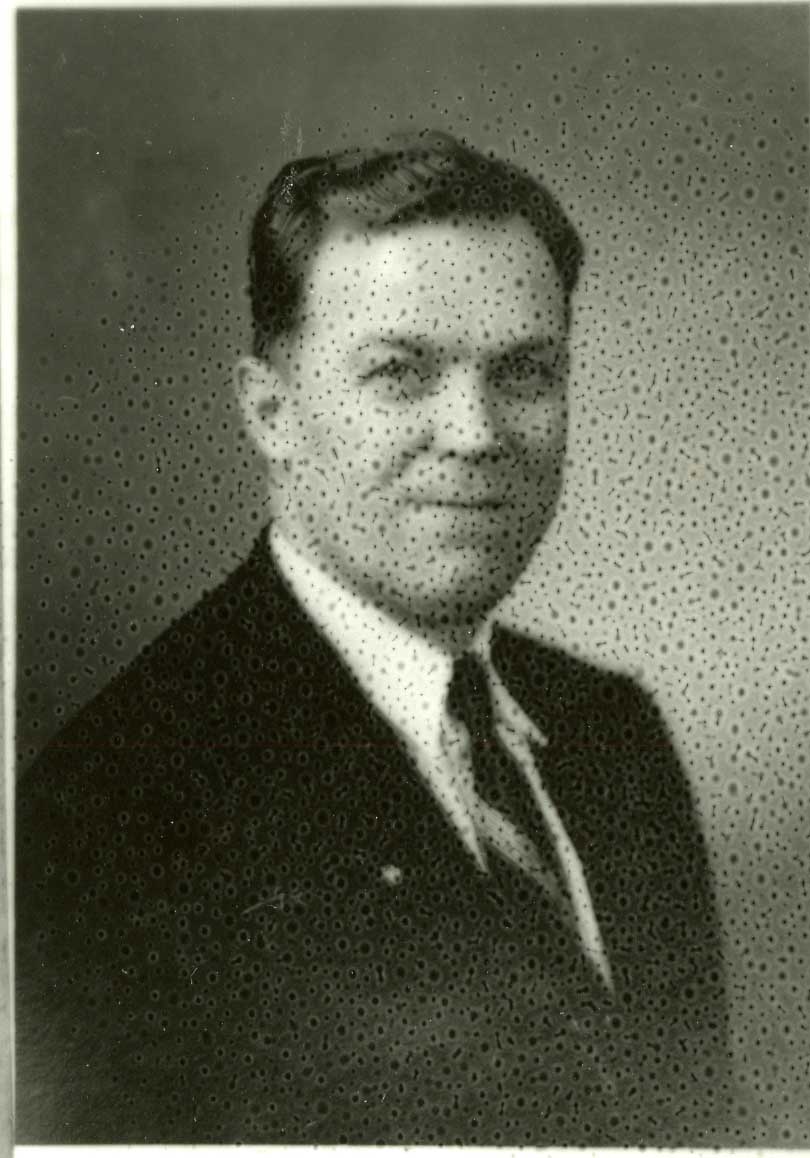 Roscoe C. Cox. (Courtesy of Joseph F. Smith Library Archives and Special Collections, BYU–Hawaii.)
Roscoe C. Cox. (Courtesy of Joseph F. Smith Library Archives and Special Collections, BYU–Hawaii.)
Shortly thereafter, another mission president, Eldred L. Waldron, replaced Cox and presided over the Hawaii Mission from 1942 to 1944. Due to genealogical questions that Samuel Ka-ne had at Kalaupapa, Waldron told LDS missionary Richard Gunn to pay a summer visit to Ka-ne, a member of the LDS branch presidency. Upon arrival on a Saturday, Gunn was surprised to find out that Ka-ne had passed away the day before. He phoned President Waldron and was instructed to stay over the weekend until the funeral on Monday. On Sunday, Gunn attended the Saints’ testimony meeting. The young man observed a Hawaiian LDS woman wearing white who stood and spoke with a raspy voice corroded by the effects of Hansen’s disease. Gunn wrote, “She bore her testimony that she was thankful for contracting Hansen’s disease (leprosy) because in coming to Kalaupapa she had found the LDS Church. . . . I have heard some wonderful testimonies, but I have never heard one who has been so thankful for such a terrible disease as a path to discovering the Church.”
The following day, Gunn described a moving experience as he witnessed the funeral of Samuel Ka-ne:
The congregation began to arrive, all dressed in white, but there were no tears, which surprised me, [because] Hawaiians do not hide their grief. Indeed, these folk looked as though they were coming to an MIA party. All looked festively happy, and I began to wonder about this Brother Kane, maybe he wasn’t worth a tear. But the first speaker talked about his service as the judge magistrate of Kalaupapa, and before he was through, I thought Kane was a true Solomon. . . .
After the funeral, the congregation trooped outside, waiting for a wagon to take the body to the sandy cemetery, but I continued to sit in my chair, held in much thought. Then I heard a noise, and turning in its direction, there was Sister Kane, blind from the disease, moving cautiously forward to find the open casket, in the tradition of that day. . . . Reaching down she found her husband’s face. . . . Sister Kane simply said with a welling-full testimony, and a full expression of love, “God be with you ’till we meet again.” She knew he still existed. . . . I saw my mission in a whole new light as well as my life and eternity. It was a major moment of high gratitude.[65]
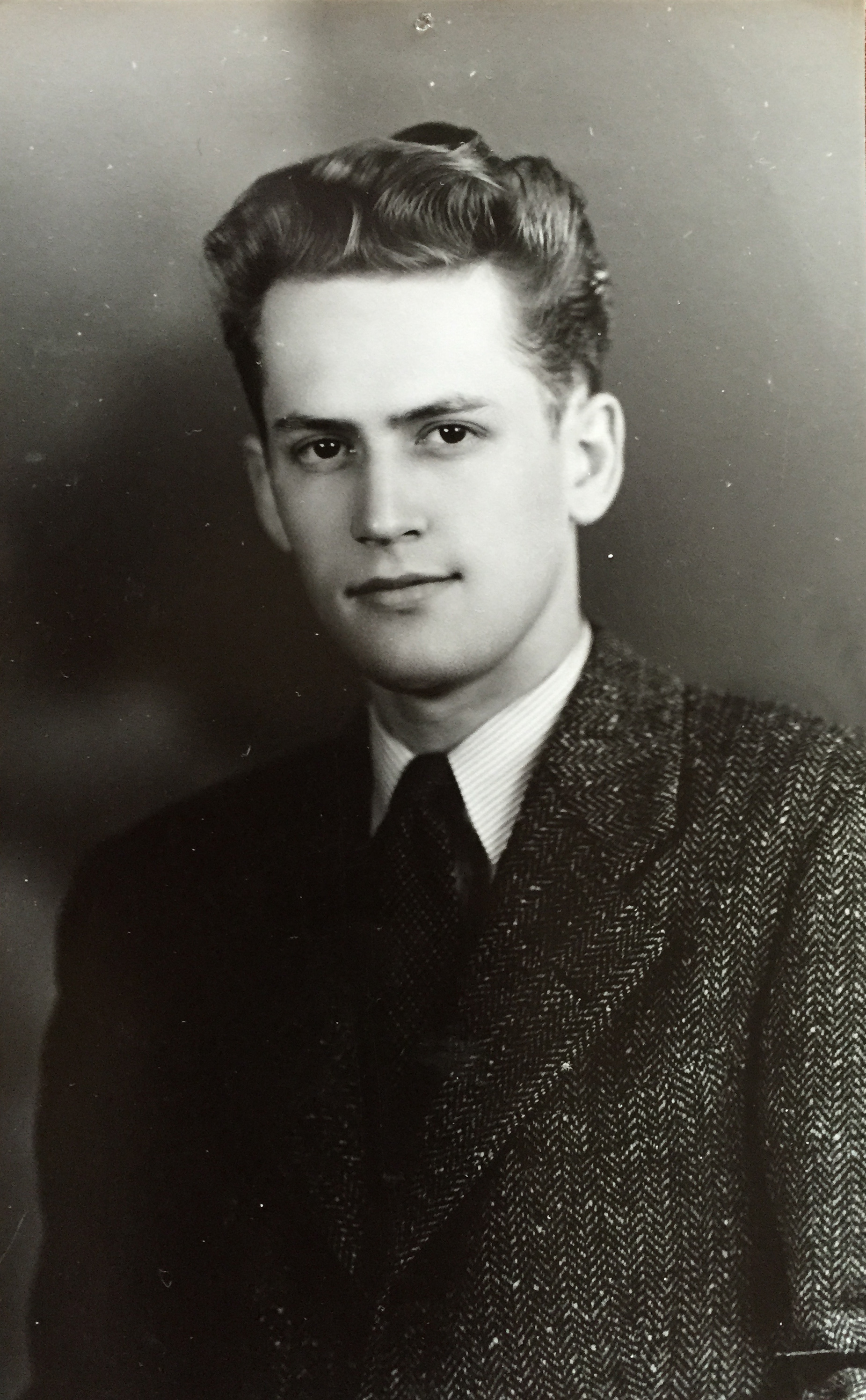 Elder Richard Gunn. (Courtesy of Janine Gunn.)
Elder Richard Gunn. (Courtesy of Janine Gunn.)
Several months later, President Eldred L. Waldron wrote the following letter addressed to the LDS First Presidency (Heber J. Grant, J. Reuben Clark, and David O. McKay). It is dated November 30, 1942, and is marked “Attn. President McKay.” This is yet another example of the effect the Kalaupapa Saints had on visitors:
I greatly rejoiced in a recent conference at Kalaupapa Leper settlement. I attended their branch conference November 8, and took with me the transcription of the dedication of the Honolulu Tabernacle. After a very lengthy and spiritual meeting in the morning, dinner was served and immediately after we commenced the meeting in which the transcriptions were played. These dear people sat almost motionless through this entire service, and once during the change of records one of the sisters, a former member of the Oahu Stake Choir—now a patient, came up and inquired as to who the present leaders are, the organists and how the members were dressed for the dedication, etc. etc. The tears just streamed down her face. Dear old brother Kauhi, the branch president sat leaning a little forward on his cane and listened so attentively through [sic, though] he can understand hardly a word of English. You know the spirit of these good people. Your recent visit there for the dedication of their [social] hall[66] is a cherished memory to all of them and it added greatly to the effectiveness of your inspiring message, and dedicatory prayer. I shall never forget the joy and appreciation which was expressed on this occasion. They all asked that I pass on to you their sincere aloha and appreciation for your recent visit to them, and for the inspiring services which they have now heard. The following are the names of those who especially wished to be remembered to you: Brother & Sister Kaulahao, the leader of the of the Kalaupapa choir which renders such beautiful music. Brother & Sister Kamauoha, Kame, Keola, Manuola, Sing, Isaiak Roeback, Wm. Malo, Alice Camers, Henry Kepoo, Helen Malo, Joseph Kekaulime, Peter Keola, John Mahilona, and David Kauhi.
During the [Kalaupapa] conference brother Kauhi was released at his request because of failing health and John Mahilona [Mahelona] was sustained as branch president. Present conditions restrict air and boat service to the settlement. This necessitated a long trip down the 1,800 ft. almost perpendicular precipice by mule. Sister Eliza N. Salm, counselor to Sister Waldron, made the trip with me in the interest of the Relief Society work. Although she is fifty-two she rode the mule like a young girl. She claims that this, her first visit to Kalaupapa, was the crowning experience of her life.[67]
Through the Eyes of a Journalist
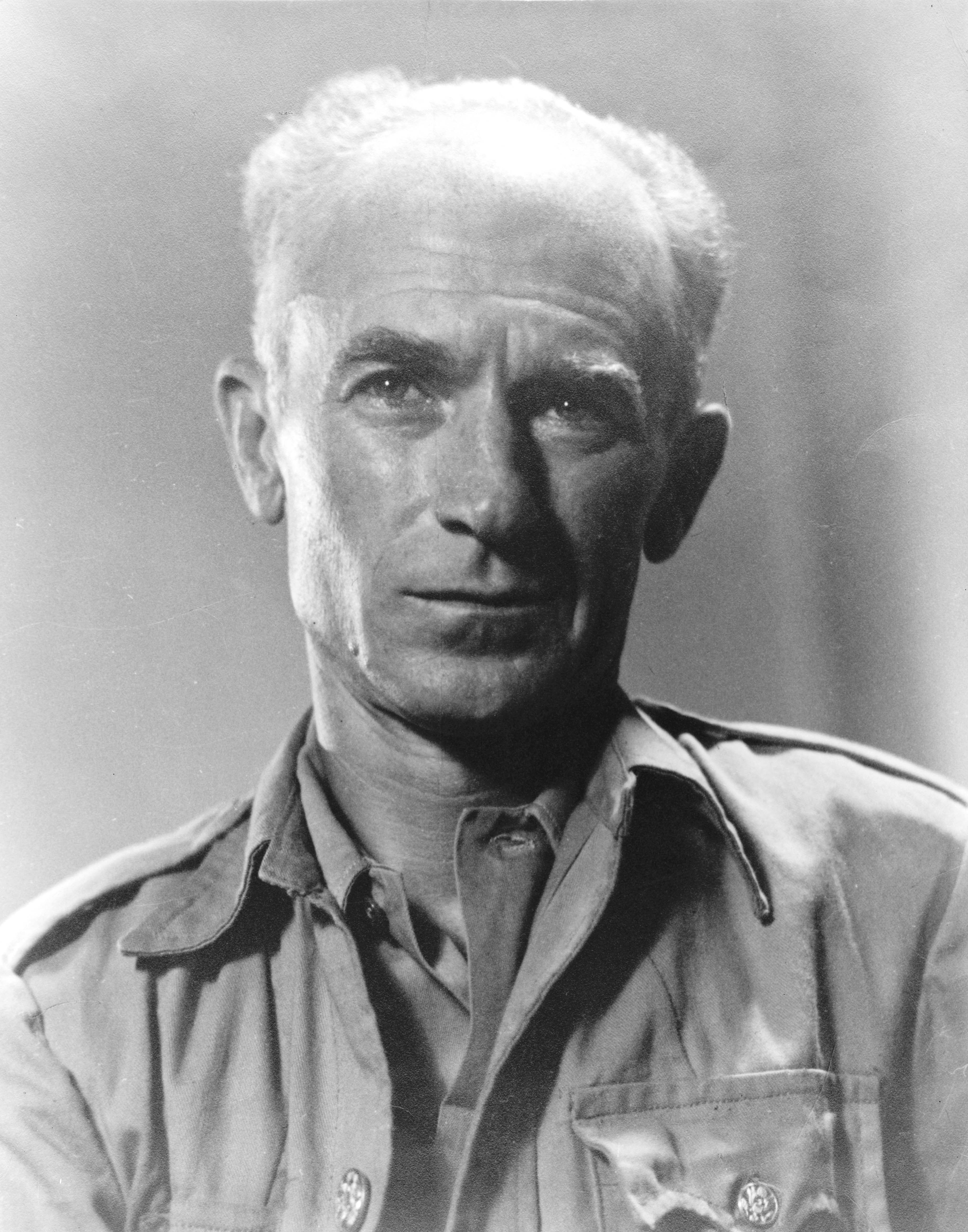 Ernie Pyle, 1945. (Courtesy of Wikipedia.)
Ernie Pyle, 1945. (Courtesy of Wikipedia.)
Ernie Pyle, a national journalist and war correspondent, was killed by a Japanese sniper during the final year of World War II. However, before this happened, he was able to visit Kalaupapa. After this visit, Pyle wrote of it as one of the most powerful experiences of his life, noting that the community’s attitude “was one of kindness and gentleness.”[68] Among his many contributions as a Kalaupapa observer, Pyle discerned the powerful freedom of choice that was exercised in the settlement. In one column he wrote, “The hardest thing for me to realize about Kalaupapa was that, within the confines of the settlement, the patients were free men and women. Nobody had to do anything. You could lie in bed all day if you wanted to. You could read all night. Even going to the hospital or receiving medical treatment was absolutely voluntary. You could lie in your cottage and die without anybody’s bothering you, if you wanted it that way.”[69]
Making the Best of Things
Regardless of their latitude, many residents, even in their stricken condition, chose to be active in and contribute to the Kalaupapa community. For example, Hashimoto delivered the mail for decades at Kalaupapa, and other patients were actively involved in the community. Another hard worker who came to Kalaupapa with Hashimoto in 1942 was Lucy Kaona, a Latter-day Saint.[70] Lucy was not one to just lie around, nor was her husband, Johnny. While Lucy provided community service and edified others with her singing, Johnny used his battered hands to make utensils and tools to assist the patients with a variety of things. Shortly before his death, Johnny said, “Put your heart into your work, that’s the main thing.”[71]
Henry Nālā‘ielua also used his hands to bring some beauty to the settlement through his oil paintings, a craft he had learned from one of the adult Catholic brothers named Patrick Hughes, who helped watch over the boys in the Baldwin Home. Henry explained that Brother Patrick did more than teach painting; he connected with the boys in other ways: “Like Damien, . . . he ignored the rules. He ate with us, swam with us, played cards. When we went fishing, he’d get in [Kenso Seki’s] truck and we’d put a burlap bag over his head so he wouldn’t get caught.”[72]
The residents of Kalaupapa enjoyed additional activities during this period. Nancy Talino remembered that during the war years, two teachers held day classes for teenagers. She also noted that the war necessitated blackout periods—no lights being allowed in the evening to prevent potential bombings. Nancy said that this meant “not much was going on” by way of socials and evening activities.[73] Yet during the day, Henry Nālā‘ielua recalled having lots of fun playing softball as well as hunting ducks and chickens.[74]
Genealogical Club
The adults organized a genealogical club during this period. It consisted of several Latter-day Saints, but other residents also attended.[75] Furthermore, records indicate that LDS members regularly contributed to the “temple fund,” which was closely connected to their belief in doing family history work for their kindred dead in the LDS temple in Lā‘ie, Hawai‘i. For example, one report lists the names of nineteen Church members donating to the temple by the close of December 1944.[76] Another record shows that thirty-one Latter-day Saints paid tithing for this same year.[77]
The following year, an additional record specifies those who either did pay or should have paid tithing, listing the names of thirty-six Latter-day Saints in the Kalaupapa congregation near the time of the close of World War II in 1945.[78] During the summer of this same year, Elder Harold B. Lee of the Quorum of the Twelve Apostles made a visit to the Kalaupapa Saints, and it was noted that there were fifty-two members of the Church at that time in the settlement. Concerning his visit, Elder Lee wrote:
They are carrying on faithfully every phase of the Church, including priesthood work, Sunday School, M.I.A., Relief Society, ward teaching, genealogical, and missionary work. The branch president made a brief report of their work, and Brother Kailemai, a counselor and chairman of the Genealogical society, bore testimony and in behalf of the Saints there expressed appreciation for our visit to them.
When they sang to us . . . and bore their testimony of what the Church meant to them, one of [them] turned to us . . . and said, “If we had to choose between having leprosy and being here with the gospel of Jesus Christ, or being well and whole, off the island, without the gospel of Jesus Christ, we would choose to be here as lepers so we could enjoy the blessings of The Church of Jesus Christ of Latter-day Saints.”
I then spoke to them briefly and extended the love of the presiding Brethren, and as an Apostle of the Lord I blessed them that they might remain true and faithful; and we closed with singing. . . . The genuine love and adoration of these people for a representative of the General Authorities is almost unbelievable.[79]
Special gatherings such as this one, weekly Church meetings, and settlement activities, along with an abundance of music, helped bring stability and harmony to the Latter-day Saints and the Kalaupapa community as a whole. The next decade saw an increasing number of athletic events, activities, entertainment, and other social organizations. These were made possible because of the introduction of sulfone drugs and the arrival of Lawrence Judd to the settlement as Kalaupapa’s resident superintendent. These events, which brought new rays of hope and a higher quality of life to the residents, are highlighted in the next chapter.
Notes
[1] “Local and General News,” Independent, October 15, 1900, 3. To access this newspaper, see Chronicling America: Historic American Newspapers, Lib. of Congress, http://
[2] William M. Waddoups, writing in his journal for the date of April 6, 1904, noted, “Bro. D. Johnson and I are called to go to Kalaupapa and dedicate two meeting houses.” See William M. Waddoups, journal, 1903–1904, L. Tom Perry Special Collections, Harold B. Lee Library, Brigham Young University, Provo, UT. See also “Kalaupapa Settlement,” 5, Kalaupapa History & description, M-420, 211, Lawrence M. Judd Collection, 1887‒1968, Hawai‘i State Archives, Honolulu. As mentioned in the previous chapter, this source notes, “A church [LDS] was built at Kalawao three hundred feet Kalaupapa side of the present Protestant place of worship and on the same side of the road. In 1904, as this structure required replacing, another was built across the road and was dedicated in April by Elders David Johnson and Wm. Waddoups. . . . Another meeting place at Kalaupapa was dedicated at the same time. . . . When Kalawao was abandoned, the chapel was torn down.” Based on information from Ku‘ulei Bell, obtained via an interview with Rodney Van Scoy on February 23, 1989, at Kalaupapa, Van Scoy noted, “A few years after the settlement was transferred to Kalaupapa the [LDS] church exchanged their meetinghouse in Kalawao for land on Maui. A patient in the settlement from Maui wanted to use the materials from the meetinghouse so that he could build himself a beach house. In exchange for this he turned over land on Maui to the church. The church ultimately came out on top of this deal.” See Rodney Van Scoy, “The Saints at Kalaupapa,” Senior Seminar Paper, History 490, for Greg Gubler, April 4, 1989, 11, 33n18. Copy in the Joseph F. Smith Library and Archives, BYU–Hawaii, Lā‘ie, HI.
[3] Orlene J. Poulsen, “Kalaupapa: Place of Refuge,” Relief Society Magazine 55, no. 3 (March 1968): 210.
[4] MHHM, June 23, 1904, cited from “Mormon Elders’ Work in a Leper Settlement,” Deseret Evening News, June 4, 1904, 7. See also Latter-day Saints’ Millennial Star, June 23, 1904, 391. Samuel Woolley, LDS mission president and plantation manager in Lā‘ie, wrote in his journal of this event, “Wednesday April 27 1904 I was busy at the house all forenoon chatting with Bros. Waddoups and Johnson about their Kalaupapa trip. They dedicated a meeting house at Kalawao Sunday morning the 24th inst [sic] and one at Kalaupapa the same day the two settlements gave a feast. They Baptized 10 new members and blessed 3 children while there and had a Jolly good time The people are all feeling fine and are happy and contented, and are treated fine, by the Superintendent—Mr McVaie [Jack D. McVeigh].” Samuel E. Woolley, journals, April 27, 1904, typescript in possession of author. LDS Church records written in Hawaiian from this era also demonstrate that gospel study was being conducted on a regular basis, which no doubt contributed to the spiritual stability, happiness, and peace of the congregation. Many accounts provide notations of scriptural texts being discussed weekly. See Kalaupapa Branch daily program of Kalaupapa Sunday School, 1911–18, Kalaupapa Branch, Hawaii Mission, LR 4289 21, Church History Library. In 1904 there were 968 total patients at Kalaupapa, over 200 of which were Latter-day Saints. This means at least 20.7% of the settlement were Mormons. See R. C. Schmitt, Historical Statistics of Hawai‘i (Honolulu: University of Hawai‘i Press, 1977), 72.
[5] “11th of June Sports at Kalaupapa,” Pacific Commercial Advertiser, June 17, 1904, 5.
[6] Jack London, “The Lepers of Molokai,” The Cruise of the Snark, http://
[7] Jack London, “Lepers of Molokai.” Jack’s wife, Charmian London, reports, “To our distress, we were appointed to award prizes at the race track. We feared hurting the contestants by injudicious choices. But Jack McVeigh pooh-poohed our diffidence, and insisted we serve on the committee. . . . Jack tied his fractious pony, and I saw him on foot over by the judges’ stand, waving arms and cowboy hat and yelling himself hoarse, just as crazy as the crowd. . . . Later, he was conversing soberly with a Norwegian and his wife, both patients, who told us we had no idea what it meant to them all for us to come here and mingle among them as friends, and that people were very happy about it. . . . The three prizes were for $5, $3, and $2, and it would not be guessing widely to say that they came out of the private pocket of the Superintendent, along with numerous other gifts during the day. He is not the man to go about with his heart’s good intentions pinned on his sleeve—indeed, a supersensitive character would be out of place as manager of such an institution; but hand in hand with iron will and executive ability, he carries a heart as big as the charge he keeps, and a keen gray eye quick to the needs of his children, as he calls them.” Charmian London, Our Hawaii (Islands and Islanders) (New York: Macmillan, 1922), 159–60.
[8] Jack London, “Lepers of Molokai.” Charmian London provides vivid details of the pā-ū, female Hawaiian horseback riders who ride with long, colorful skirts: “In the silvering light across the dewy hemisphere a cavalcade of pa’u riders took shape, coming on larger and larger with a soft thunder of hoofs, wild draperies straight out behind in the speeding rush, and drawing up with a flourish, horses on haunches, before the Superintendent’s house. The vivid hues of the long skirts intensified in the increasing daylight—some of them scarlet, some blue, or orange, while one proud equestrienne sued for favor with a flaunting panoply of Fourth of July red, white, and blue. Many of the girls were mercifully still comely, even pretty, and rode superbly, handling their curvetting steeds with reckless grace and ease. All forenoon these gala-colored horsewomen trooped singing and calling over the rises and hollows of the countryside, to incessant blaring of the bands of both villages combined. The whole was a picture of old Hawaii not to be composed elsewhere in the Territory, and certainly nowhere else in the world. . . . No description can depict the sight that was ours the forenoon long. . . . But the most imposing event of the afternoon, as of the morning, was enacted by the pa’u riders, who paced leisurely in stately procession once around the course, then circled once in a swinging canter, and, finally, with mad whoopings, broke into headlong stampede that swept twice and a half around before the Amazons could win control of their excited animals. A truly gorgeous spectacle it was, the flying horses with their streaming beribboned tails, the glowing riders, long curling hair outblown, and floating draperies painting the track with brilliant color.” Charmian London, Our Hawaii, 158–60. On the origin and history of pā-ū riders and pā-ū as the Hawaiian word meaning skirt, see http://
[9] Woolley, journals, September 9, 1914.
[10] President David K. Kauhi, LDS Church report, September 10, 1916, translated from Hawaiian to English by Jason Achiu, archivist at the Hawai‘i State Archives in Honolulu. Kalaupapa/
[11] During this period when Mary Sing was staying at the Bishop Home under the direction of Mother Marianne, there is evidence that Mormons were allowed to hold meetings at the Bishop Home on Sundays from 1:00 to 2:00 p.m. This was authorized by both the Kalaupapa resident superintendent, Jack McVeigh, and Mother Marianne Cope. See David K. Kauhi to J. D. McVeigh, January 22, 1917; Jack McVeigh to Mother Marianne, January 24, 1917; Jack McVeigh to David K. Kauhi, January 24, 1917; Mother Marianne Cope to Jack McVeigh, January 30, 1917; and Mother Marianne Cope to Jack McVeigh, February 3, 1917. The author expresses appreciation to Sister Mary Laurence Hanley for providing copies of this correspondence from the archive at St. Anthony Convent and Motherhouse of the Sister of St. Francis, Syracuse, New York.
[12] Jack and Mary Sing, oral history interview by Ishmael Stagner and Kenneth Baldridge, February 24, 1979, Kalaupapa. A transcription of this interview is available at the Joseph F. Smith Library Archives and Special Collections, BYU–Hawaii. See Mary Sing comment on page 8. This story is supported by another patient, David Kupele. See David Kupele, interview by Ishmael Stagner, February 24, 1979, 11.
[13] Waddoups, journal, July 31 and August 2–3, 1919. On this same day, Waddoups set apart John M. Bright as the president of the Kalaupapa Branch, which position Bright held until 1925 as noted in a copy of an LDS Ledger in possession of author.
[14] “Hawaiian Mission. Kalaupapa Branch,” Liahona: The Elders Journal 17, no. 10 (November 11, 1919): 164. Waddoups arrived in Hawai‘i in May 1918 and spent the next eighteen months promoting genealogy in Hawai‘i for proxy ordinance work prior to the Lā‘ie temple dedication in November 1919. The author thanks Riley Moffat for bringing this issue to his attention.
[15] John M. Bright was listed as a part-Hawaiian kōkua (helper) to “Mrs. Bright” from Honolulu, who entered the settlement on September 9, 1918. See Kalawao Kokuas 1968 to 1929. See series “260 Hansen’s Disease,” vol. 10, Health/
[16] That Waddoups was heavily involved in genealogy and temple work can be attested by journal entries which provide compilations of the numbers of people who had received temple ordinances over the years. Further, at the back of his last known journal (Waddoups Journal, January to March 1946), there are notations about temple sealings as late as December 1955. Further, after these notations, there is a note by William’s wife, Olivia, which states the following: “Feb. 11th, 1957. I am recording the last of the Sealings Bro Waddoups performed in the Salt Lake Temple. He was taken ill with cancer Dec. 25, 1955, and was never well enough to return to the Temple. He passed away Sept. 21, 1956 at Alpine Villa Motel in Pleasant Grove, Utah, where we have an apartment. . . . Olivia.” See also Damon, Siloama: The Church of the Healing Spring, 34. Here, Damon further notes, “I had the pleasure of visiting with Mr. and Mrs. Waddoups in their home at the Settlement, and of seeing there the long Polynesian genealogies which Mr. Waddoups has compiled during a lifetime of service in the Pacific area.”
[17] Waddoups, journal, August 1, 1919. Two and a half years earlier, evidence reveals that as early as February 1917, Kalaupapa Saints were giving five-dollar donations to the Laie Hawaii Temple Fund, even though the temple would not be dedicated until November 1919. See “Tithing and Temple Fund Report for the month ending Feb. 28th 1919,” Kalaupapa Records, Kalaupapa/
[18] MHHM, November 27, 1919.
[19] These doctrinal beliefs about the temple stem from an LDS interpretation of biblical passages. For example, Mormons believe that when the Apostle Paul asked, “What shall they do which are baptized for the dead, if the dead rise not at all?” Paul was referring to the doctrine of baptizing in proxy for the dead who had not yet been baptized, or had not been baptized by proper priesthood authority (see 1 Corinthians 15:29). Further, Latter-day Saints believe that when Jesus said to Peter, “I will give unto thee the keys of heaven: and whatsoever thou shalt bind on earth shall be bound in heaven,” Jesus was referring to a priesthood sealing power, which included uniting a man and woman in marriage not just until “death do they part” but for time and all eternity (see Matthew 16:19). Interestingly, when Jonathan Napela returned from his visit to Salt Lake City in the late fall of 1969, he immediately met with King Kamehameha V and related the following concerning this meeting in a later letter to Brigham Young: “I informed my king that B. Young’s responsibility to Kamehameha I was concluded, as I was baptized on his (Kamehameha I’s) behalf; but that he (the king) is responsible for the remainder of his ancestors buried in the earth and that their salvation rests upon him and that he must think about them. . . . There was much astonishment . . . and appreciation.” Jonathan Napela to Brigham Young, April 11, 1871, translated by Jason Achiu. Concerning the rest of the visit, see Fred E. Woods, “An Islander’s View of a Desert Kingdom: Jonathan Napela Recounts his 1869 Visit to Salt Lake City,” BYU Studies 45, no. 1 (2006): 23–34.
[20] Wilford W. King, “Hawaiian Mission. Kalaupapa Branch,” Liahona, December 23, 1919, 220.
[21] King, “Hawaiian Mission. Kalaupapa Branch,” Liahona, March 16, 1920, 318‒19.
[22] MHHM, April 4, 1920; also noted in the Deseret News, May 8, 1920.
[23] King, “Hawaiian Mission. Kalaupapa Branch,” Liahona, May 11, 1920, 390.
[24] King, “Hawaiian Mission. Kalaupapa Branch,” Liahona, July 20, 1920, 42.
[25] MHHM, December 23, 1920. Twenty-five years later, the secretary of the Kanaana Hou Church at Kalaupapa wrote a letter to the editor of the Friend, later published as “Christmas at Kalaupapa,” February 1, 1946, 14–15. This letter described an ecumenical evening at the settlement which noted, “Mr W. M. Waddoups, our Superintendent of the Settlement, offered the Christmas prayer, putting into words our grateful thanks to God for all His blessings. Rev. Kahokuoluna gave the benediction, bringing to a close the evening of worship, but the effects we known will help us, even when we slip or fall, to climb again, for God’s hand is always there.”
[26] John M. Bright to E. Wesley Smith, undated, but it was probably written in the month of December 1921. It is located in a series of letters identified as “letter 23—# 8,” Hawaii Mission President’s records, LR 3695 21, reel 2, box 2, folder 6, Church History Library.
[27] MHHM, February 20, 1921. See also Lance D. Chase, Ku‘ulei Bell, “Faith, Hope, and Hansen’s Disease: The Saints at Kalaupapa,” in Voyages of Faith: Explorations In Mormon Pacific History, ed. Grant Underwood (Provo, UT: Brigham Young University Press, 2000), 377.
[28] HC, July 21, 1921, cited from the Deseret News of this same date.
[29] MHHM, September 20, 1921.
[30] Apostle Joseph Fielding Smith and his wife spent ten days on the island of Moloka‘i, which included a trip to Kalaupapa. They were accompanied by Hawaii Mission President E. Wesley Smith, the brother of Joseph Fielding Smith. The Saints were “delighted” by their visit. See MHHM, October 30, 1921. That Elder Joseph Fielding Smith remained aware of the Kalaupapa settlement can be evidenced by an article he submitted to the Deseret News less than two years later: “In 1908 there were 1,000 persons in the leper colony at Molokai on the island of Kalaupapa, one third of them being non-lepers. Today there are 450 people in the colony, one-third of them non-lepers. In less than three months there have just recently been released 30 lepers from the receiving hospital at Honolulu out of 300 patients there. This is all brought about by the use of the oil hypodermic recently refined for such use by Dr. Dean, president of the college of Hawaii. The manner of contracting the disease remains still a mystery but the new oil ‘hypos’ are proving wonderful cures.” See “Islands Declared Logical Place to Train Missionaries,” Deseret News, May 25, 1923, 8. This article is also cited in the MHHM, May 25, 1923. Elder Smith also returned for a visit to Kalaupapa in 1938 as his name appears on the settlement guest register. See Superintendent Annual Report, 1938, series 260, box 30, Hawai‘i State Archives.
[31] See, for example, entries in the MHHM, September 24, 1924, and January 13, 1929.
[32] MHHM, May 5, 1927.
[33] MHHM May 1, 1928. Two years later, Castle Murphy, president of the Hawaiian Mission, also visited the Kalaupapa settlement and “reported conditions favorable” there and among the Saints as a whole on the island of Moloka‘i. See MHHM, December 13, 1930.
[34] William M. Waddoups, “Cheer and Trust to Face Adversity,” Improvement Era, August 1930, 714–15.
[35] “Sunday School Department Comparative Report of the Month of March 1933,” Kalaupapa Branch, Moloka‘i, Hawai‘i, Sunday School Monthly Reports (comparative reports, Hawaiian Mission), January–March 1933 XII, box 1, folder 1:15, Kalaupapa/
[36] See Composition Notebook, Prayer meeting roll call, program notes, 1935‒1938 XII, box 1, folder 1:2, Kalaupapa Branch, Moloka‘i, Hawai‘i, Kalaupapa/
[37] Hui ‘Ōpio meeting minutes for youth and officers held during the months of January to June and September to December 1935. Such meetings were known generally in the Church as the Mutual Improvement Association (MIA). Although these records are called the “Kalaupapa Branch Young Women’s Mutual Improvement Association minutes and records,” the young men and women were meeting together. See Kalaupapa Branch Young Women’s Mutual Improvement Association minutes and records, 1935 Kalaupapa Branch, Hawaii Mission, LR 4289 17. Minutes from youth meetings designated as “Young Men’s Mutual Improvement Association” are also misleading as the records indicate that the young men and young women continued to meet together weekly, but now under the designation MIA. See Kalaupapa Branch Young Men’s Mutual Improvement Association minutes and records, 1928–1948, Kalaupapa Branch, Hawaii Mission, LR 4289 16. Records for the early years, commencing in 1928, indicate the minutes are written in Hawaiian.
[38] Hui ‘Ōpio Meeting Minutes, January 27, 1935, Kalaupapa Branch Young Women’s Mutual Improvement Association minutes and records, 1935 Kalaupapa Branch, Hawaii Mission, LR 4289 17.
[39] Hui ‘Ōpio Meeting Minutes, February 3, 1935, Kalaupapa Branch Young Women’s Mutual Improvement Association minutes and records, 1935 Kalaupapa Branch, Hawaii Mission, LR 4289 17.
[40] Hui ‘Ōpio Meeting Minutes, April 7, 1935, Kalaupapa Branch Young Women’s Mutual Improvement Association minutes and records, 1935 Kalaupapa Branch, Hawaii Mission, LR 4289 17. The percentage of LDS patients at this time is estimated at about ten percent of the settlement which had 448 patients by the close of 1934. Email from Kerri Inglis to Fred E. Woods, September 23, 2016, provided the total number of patients for this year. In 1935 the total population at Kalaupapa was 485 patients, with at least 69 LDS members during this period. This means that a minimum of 14 percent of the settlement were Mormons. See R. C. Schmitt, Historical Statistics of Hawaii (Honolulu: University of Hawai‘i Press, 1977), 73.
[41] Roscoe C. Cox to David Kahui [Kauhi], June 5, 1940, translated from Hawaiian to English by Jason Achiu, Kalaupapa/
[42] Ernest P. Elia, interview by Kenneth W. Baldridge, December 27, 1979, Kenneth Baldridge Oral History Collection, OH-97, 32, Joseph F. Smith Library Archives and Special Collections, BYU–Hawaii. A contemporary of Elia, journalist Ernie Pyle, was also struck by the music of the Kalaupapa community as a whole. He wrote, “No man dare say that he has advanced through the curriculum of all emotions until he has sung to him the beautiful ‘Aloha Oe,’ Hawai‘i’s song of greeting and farewell, by the leper singers of Kalaupapa.” See Ernie Pyle, Home Country (New York: William Sloane Associates, 1947), 245.
[43] Original manuscripts of these testimonies by David Kamahana and David Ilihia and others are housed at the Archbishop Archive in Mechelen-Brussels, Belgium.
[44] Charles A. Callis to his children, April 9, 1940, Charles A. Callis Collection, MSS 22, box 1, folder 3, L. Tom Perry Special Collections, Harold B. Lee Library, Brigham Young University, Provo, UT.
[45] Arthur D. Slater, journal, August 22, 1941, copy of excerpt in possession of author.
[46] Arthur D. Slater, journal, September 6, 1942, copy of excerpt in possession of author. Slater’s home for a few months during this time was in the Ho‘olehua area on topside Moloka‘i. He was from Ogden, Utah, and left on his mission on November 22, 1939. By October of the following year, he was one of sixty-nine LDS missionaries serving in the Hawaii Mission. In the summer of 1941, he was listed as a district president and scout worker assigned to the Hoolehua Branch on topside Moloka‘i. See Hawaii Mission President’s records, LR 3695 21, reel 1, box 1, folder 1; “List of Missionaries in the Hawaiian Mission as of October 1, 1940,” LR 3695 21, reel 1, box 1, folder 1; and “Mission President’s Circular No. 22 August 4, 1941,” LR 3695 21, reel 2, box 2, folder 9, Church History Library.
[47] Henry Kalalahilimoku Nālā‘ielua and Sally-Jo Keala-o-Ānuenue Bowman, No Footprints in the Sand: A Memoir of Kalaupapa (Honolulu: Watermark Publishing, 2006), 46. The authors described the gate at the top of the Kalaupapa pali (cliff) and the gatekeeper whom he referred to as “Mr. Titcomb” rather than Tidcomb as Slater referred to him in his journal. Henry recalled, “At the top of the trail, Mr. Titcomb guarded a gate that was about 16 feet tall and 8 feet wide, to make sure no trespassers sneaked through. He also had charge of all freight that came via Kaunakakai, Molokai. Titcomb was at the gate from 6 a.m. to 6 p.m. six days a week.”
[48] LDS missionary Richard Gunn passed through this same gate the following year and described the hostile passage way: “A forbidding gate edged with sharp strands of barbed wire greeted us. Why such a barbaric division between peoples in the land of aloha? We each formed our own thoughts. Far below us was the peninsula of Kalaupapa spread out like a leaf at the base of a great cliff as its Hawaiian name reveals.” Journal of Richard Gunn, July 6, 1942. The author thanks Jeanine Gunn for providing him with this excerpt.
[49] This evidences that the LDS mission home (next to the Kalaupapa chapel) was built in 1941. It is likely that the social hall was built this same year, which was dedicated by President David O. McKay.
[50] Arthur D. Slater, journal, September 13, 1941, copy of excerpt in possession of author.
[51] Arthur D. Slater, journal, September 14, 1941, copy of excerpt in possession of author.
[52] Arthur D. Slater, phone interview by Fred E. Woods, June 22, 2014, LDS Ledger, copy in possession of author. The Kalaupapa Branch president at this time was David K. Kauhi, who served in this position from 1933 to 1942. During this same year (1941), another LDS missionary, by the name of Elder Keith Gardner, visited Kalaupapa. He recalled that he felt a “spirit of hope” coming from the congregation. He wrote with amazement, “The organist played the organ with some of his fingers bandaged and others missing, yet he hit every stirring note.” See Susan Stewart, Pure Gold: A Behind-the-Scenes look at a Builder of the Kingdom Keith Elliot Gardner (Salt Lake City: Promontory Publishing, 2003), 17.
[53] Arthur D. Slater, journal, September 14, 1941, copy of excerpt in possession of author.
[54] Arthur D. Slater, journal, October 25–26, 1941, copy of excerpts in possession of author.
[55] Jack filmed a number of movies of his own with Church members and other patients. Some of his film material is located at the Church History Library in Salt Lake City, Utah, and a copy is housed at the BYU–Hawaii Archives.
[56] Arthur D. Slater, journal, November 14–15, 1941, copy of excerpts in possession of author.
[57] Arthur D. Slater, phone interview by Fred E. Woods, June 22, 2014.
[58] Henry Nālā‘ielua, interview by Fred E. Woods, August 7, 2006, at the Hale Mōhalu Hospital. Danny was one of fifty-five patients at Kalihi Hospital who were transferred to Kalaupapa on May 15, 1942 (forty-two of whom were between the ages of nine and eighteen). This created new challenges for the Hawai‘i Board of Education (See Greene, Exile in Paradise, 524). In this same interview, Henry, whom I referred to affectionately as “Uncle Henry,” later stated, “There is nothing that I do not like about Kalaupapa, it has its ups and downs, its good and bad, but when you put it all together you have to . . . be able to say thank you for what has happened.” Further, he mentioned that he was one of the non-LDS volunteers who helped build the Mormon chapel that was dedicated in 1965 at Kalaupapa.
[59] Nancy Talino, interview by Fred E. Woods, August 7, 2006, at Hale Mōhalu. Nancy was born on November 22, 1925, and Henry Nālā‘ielua was born less than three weeks earlier on November 3, 1925, but he passed away in 2009. Nancy is still living at Hale Mōhalu and is ninety years old. Her parents were from the Buddhist tradition, but she converted to Christianity as a girl at the Kalihi Hospital. She recalled that when she went to Kalaupapa and lodged in the Bishop Home, Sarah Benjamin, who was a Protestant and house mother of eleven girls there, taught the Catholic, Protestant, and Mormon girls Christian values. Nancy recalled the ecumenical atmosphere that existed at the Bishop Home: “We all gathered in the porch area, and . . . each person would lead on a different night, we’d sing songs, we’d say memory verse, and we would kneel down in prayer.”
[60] Jack and Mary Sing, interview by Ishmael Stagner and Kenneth Baldridge, February 24, 1979, LDS chapel at Kalaupapa, 14.
[61] Paul Harada and John Arruda, interview by Fred E. Woods, July 29, 2006, Kalaupapa. Paul came to Kalaupapa in June 1945 at the age of twenty. See also Greene, Exile in Paradise, 639. Here, Greene notes that this structure was also used as a social hall by the Americans of Japanese Ancestry Benevolent Society for “Buddhist ceremonies as well as social gatherings.”
[62] Nālā‘ielua and Bowman, No Footprints in the Sand, 45. Mary Sing recalled there were quite a number of Japanese during World War II and noted, “The Japanese had their own Japanese Society.” See Jack and Mary Sing, Oral History interview, February 24, 1979, 13. See also Sister Rose La Maunch, interview by Fred E. Woods, September 18, 2008, St. Francis Monastery, Syracuse, NY. In this interview, Rose indicated that when she arrived at the settlement in 1949, there were perhaps eight or ten Buddhist patients that were all of Asian descent, who she thought were mostly Japanese.
[63] Danny Hashimoto, interview by Fred E. Woods, February 9, 2015, Kalaupapa. This was one of several interviews with Danny, commencing on June 19, 2007, conducted by Ethan Vincent, and assisted by Fred E. Woods. One humorous incident regarding this first interview was that Danny had previously told me years before that he would not allow any interviews. However, after a tire flew off his car due to rusted bolts and he received help from LDS film director Ethan Vincent and me, Danny said we could interview him. After we finished, he also let us know that we could conduct further interviews with him if we wanted. One of my last experiences with Danny at Kalaupapa was in 2015. He went looking for me with a nurse who drove him from the Kalaupapa hospital and found me at the National Park Archive doing research. He was wearing his hospital pajamas, wondering if I wanted to interview him again. I smiled and arranged to visit with him later in his hospital room. A tepid relationship of a decade had become a strong friendship.
[64] Roscoe C. Cox to David Kauhi, May 30, 1942, Kalaupapa/
[65] Richard Gunn, letter, in Richard Gunn Journal, July 6, 1942. This account was taken from a letter extracted and expanded from his journal account. He later used it to write up the event for his posterity and titled it “Face to Face with Leprosy,” which is part of a family history he wrote, and is found on pages 45 and 46. The author expresses appreciation to Jeanine Done Gunn for providing the author with a copy of this document as well as the journal account. Dick Gunn was born on September 28, 1918, served an LDS mission to Hawai‘i (1940–42), and passed away on April 28, 2013. The italics in this quote are in the original.
[66] According to the diary of David O. McKay, he arrived in Kalaupapa on August 21, 1941, where he was met by the superintendent and two Mormon missionaries. McKay noted, “Meeting house was neat, clean and tidy.” He also mentioned, “Twenty-seven members met in the amusement [social] hall, towards the erection of which they had contributed $650.00 out of $2,000.00 paid by the church.” Elder McKay also described who conducted the dedicatory service and their remarks: “Brother K. Ka-ne (Community Judge) conducted the exercises, a very intelligent man. At the conclusion of the program in expressing appreciation of our visit, he gave one of the most appealing sermons I have ever heard. His reference to his and other’s conditions was truly pathetic.” Finally, McKay outlined the entire program which included three hymns, remarks by visitors: Bishop Joseph L. Wirthlin, President Roscoe Cox, and Elder Waldron, with “Greetings from the First Presidency,” which though not specified, were undoubtedly from Elder McKay. See David O. McKay papers, MS 668, box 23, folder 3, Marriott Library, University of Utah. The author expresses appreciation to Kevin Priest, Special Collections, Marriott Library, for his assistance in locating this document and providing a typescript of its contents.
[67] Hawaii Mission President’s records, LR 3695 21, reel 1, box 1, folder 2, Church History Library. Two years later, LDS missionary Wiley M. Nebeker, apparently in correspondence with his mission president, Eldred L. Waldron, wrote the following amidst several other journal excerpts: “June 13, 1944 in Company with Elders Anderson and Hunt, I went to the Kalaupapa Leper settlement. We visited with the people and held a special meeting with the Saints in the Chapel. This was one of the most inspirational meetings I have attended. A dinner was enjoyed by all at the Home of Bro. and Sister Waddoups, with Brother and sister Worley present.” See “June 19, 1944, Report of Wiley M. Nebeker,” LR 3695 21, reel 1, box 1, folder 3, Church History Library.
[68] Pyle, Home Country, 230, 244.
[69] Pyle, Home Country, 230.
[70] According to an LDS ledger in the possession of the author, the branch president at the time Lucy arrived was David K. Kauhi, who served as the LDS leader from 1933 to 1942, and who had also served in this same calling from 1914 to 1919. Kauhi was replaced by Jonah K. Mahelona in late 1942 and served as a police officer at Kalaupapa.
[71] Anwei Skinsnes Law, Kalaupapa: A Portrait, with photographs by Wayne Levin (Honolulu: Arizona Memorial Museum Association and Bishop Museum Press, Bishop Museum Special Publication, no. 91, 1989), no page number given on any page of this text. Law further notes that after John Kaona had his photograph and jewelry published by National Geographic in 1981, his work was sought out by many tourists.
[72] Nālā‘ielua and Bowman, No Footprints in the Sand, 51.
[73] Nancy Talino, phone interview by Fred E. Woods, January 1, 2016.
[74] Henry Nālā‘ielua, interview by Fred E. Woods, August 7, 2006, Hale Mōhalu.
[75] Kalaupapa Branch Records, box 1, folder 13, Kalaupapa/
[76] “Kalaupapa Branch Yearly report for the Temple Fund ending December 17, 1944,” box 3, folder 3:1, Kalaupapa Branch, Moloka‘i, Hawai‘i Monthly Branch Financial and Statistical Reports to Hawaiian Mission, 1943–1944 XII, Kalaupapa/
[77] “Kalaupapa Report of the tithepayers for the 3 months, ending Dec. 17, 1944,” box 3, folder 3:1, Kalaupapa Branch, Moloka‘i, Hawai‘i, Monthly Branch Financial and Statistical Reports to Hawaiian Mission, 1943‒1944 XII, Kalaupapa/
[78] “Annual Report of the Members of The Church of Jesus Christ of Latter-day Saints who should pay tithing and tithes paid for the year ending November 30, 1945, in the Kalaupapa Branch Molokai District,” box 1, folder 1:15, Kalaupapa Branch, Moloka‘i, Hawai‘i, Sunday School Monthly Reports comparative reports, Hawaiian Mission, Kalaupapa/
[79] L. Brent Goates, Harold B. Lee: Prophet & Seer (Salt Lake City: Deseret Book, 1985), 194–95.
